Garden sleepers have transformed from railway infrastructure into versatile landscaping materials that bring rustic charm and practical functionality to outdoor spaces. These robust timber beams offer endless possibilities for creating stunning garden features, from elevated planting areas to stylish seating solutions. Whether you choose new pressure-treated sleepers or reclaimed railway timber, these substantial wooden elements provide durability that withstands weather while adding natural texture to any garden design. Their adaptability suits various garden styles, from contemporary minimalist to traditional cottage gardens, making them an ideal choice for homeowners seeking both aesthetic appeal and long-lasting performance.

1. Raised Sleeper Vegetable Garden Beds
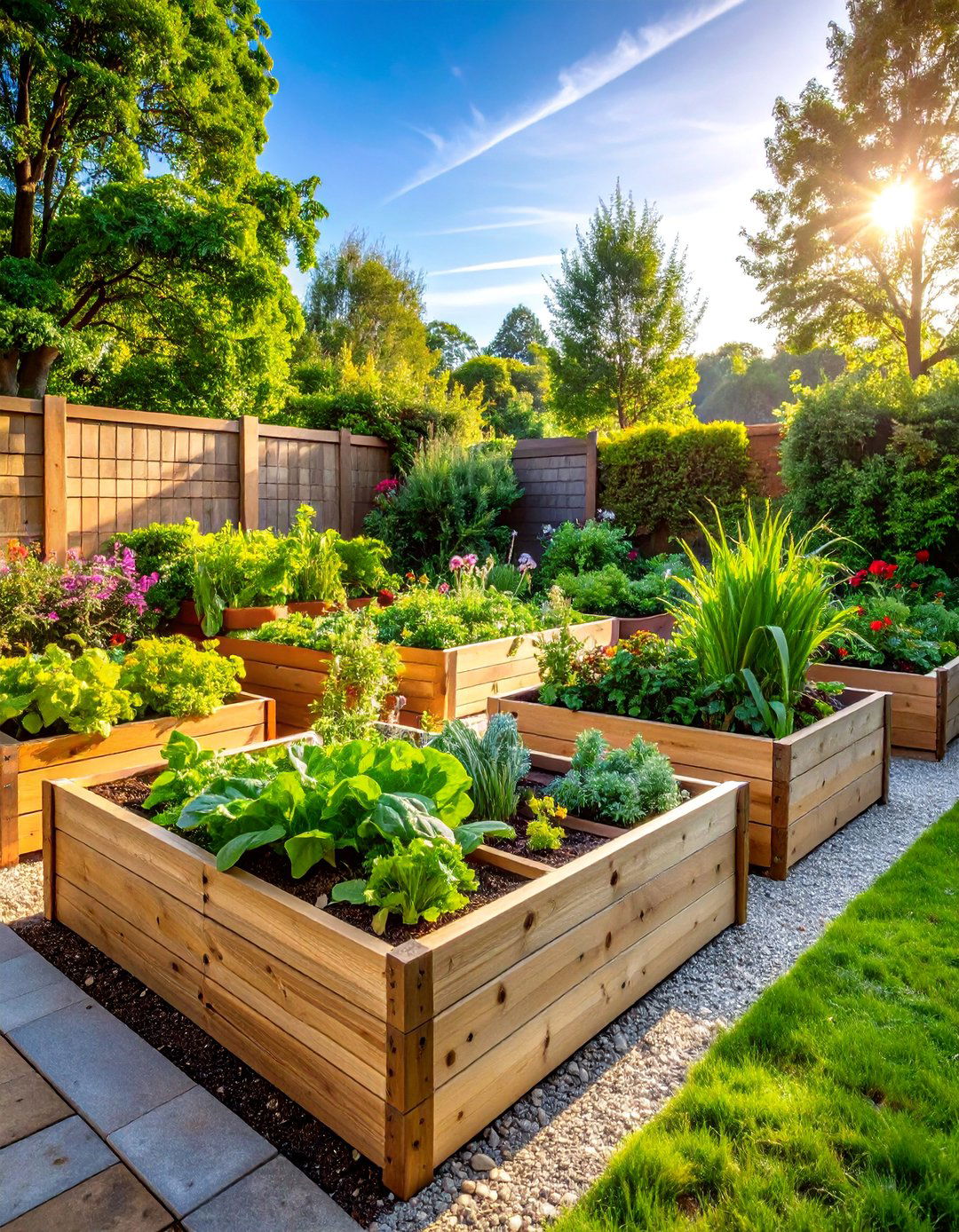
Creating elevated growing spaces using stacked sleepers provides optimal conditions for vegetable cultivation while adding structured beauty to your garden layout. These raised beds offer excellent drainage, improved soil quality, and easier maintenance compared to ground-level planting. Stack sleepers horizontally to achieve desired height, typically 600-800mm for comfortable access without bending. Line the interior with landscape fabric before filling with quality growing medium. The elevated design naturally deters pests like slugs while extending the growing season through better soil warming. Position beds to receive 6-8 hours of daily sunlight and ensure adequate spacing between beds for wheelbarrow access and garden maintenance activities.
2. Oak Sleeper Retaining Wall Systems
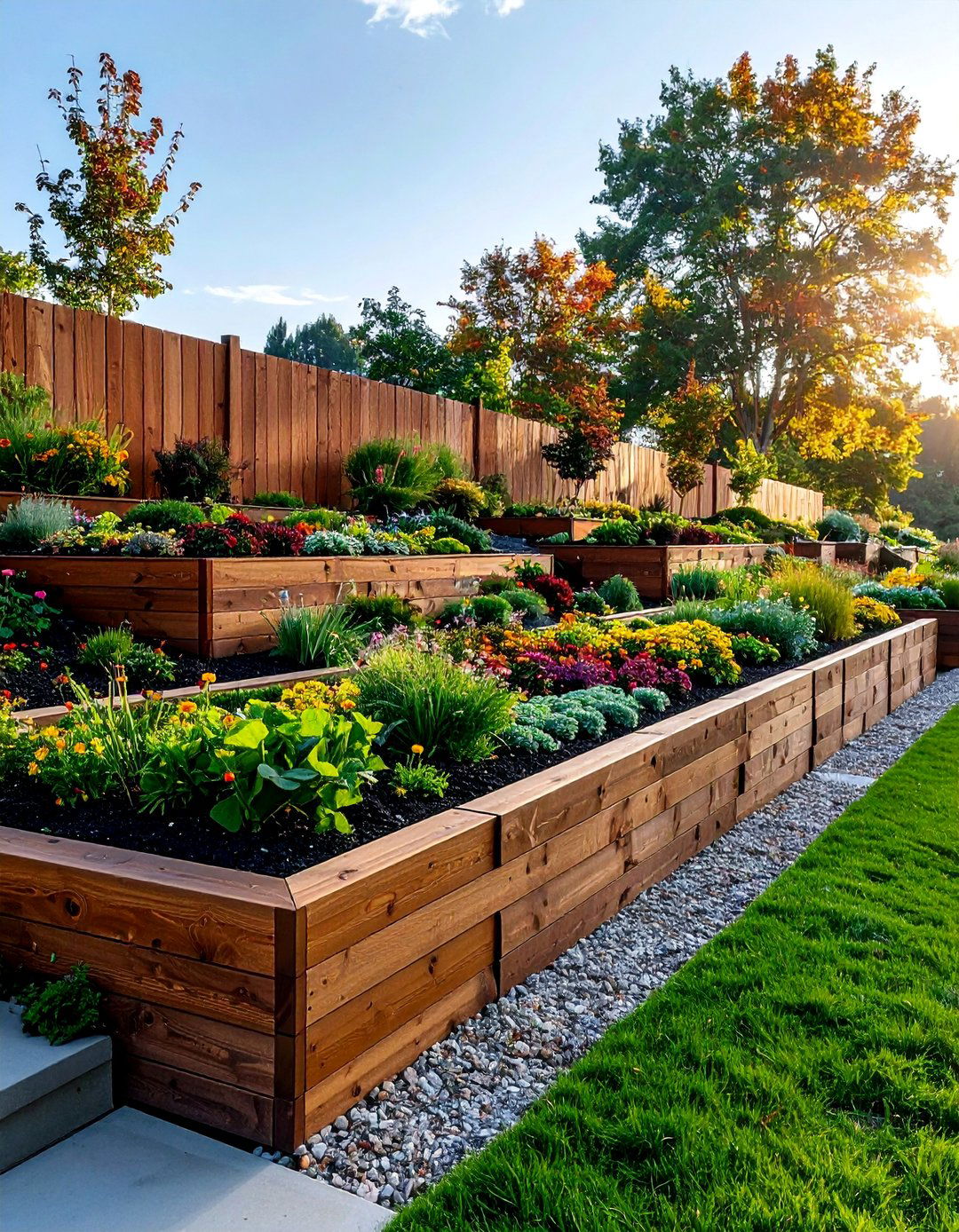
Hardwood oak sleepers create robust retaining walls that combine structural integrity with natural aesthetic appeal for sloped gardens. These substantial timber barriers effectively prevent soil erosion while creating usable level areas from challenging terrain. Install sleepers horizontally with overlapping butt joints for traditional wall construction, or position vertically for curved designs that follow natural contours. The density and natural rot-resistance of oak ensure longevity, typically lasting 15-20 years with minimal maintenance. Incorporate proper drainage behind walls using gravel and permeable membrane to prevent water buildup. These walls support various heights and can integrate seamlessly with planted areas, creating terraced garden zones perfect for diverse landscaping themes.
3. Rustic Sleeper Garden Steps and Staircases
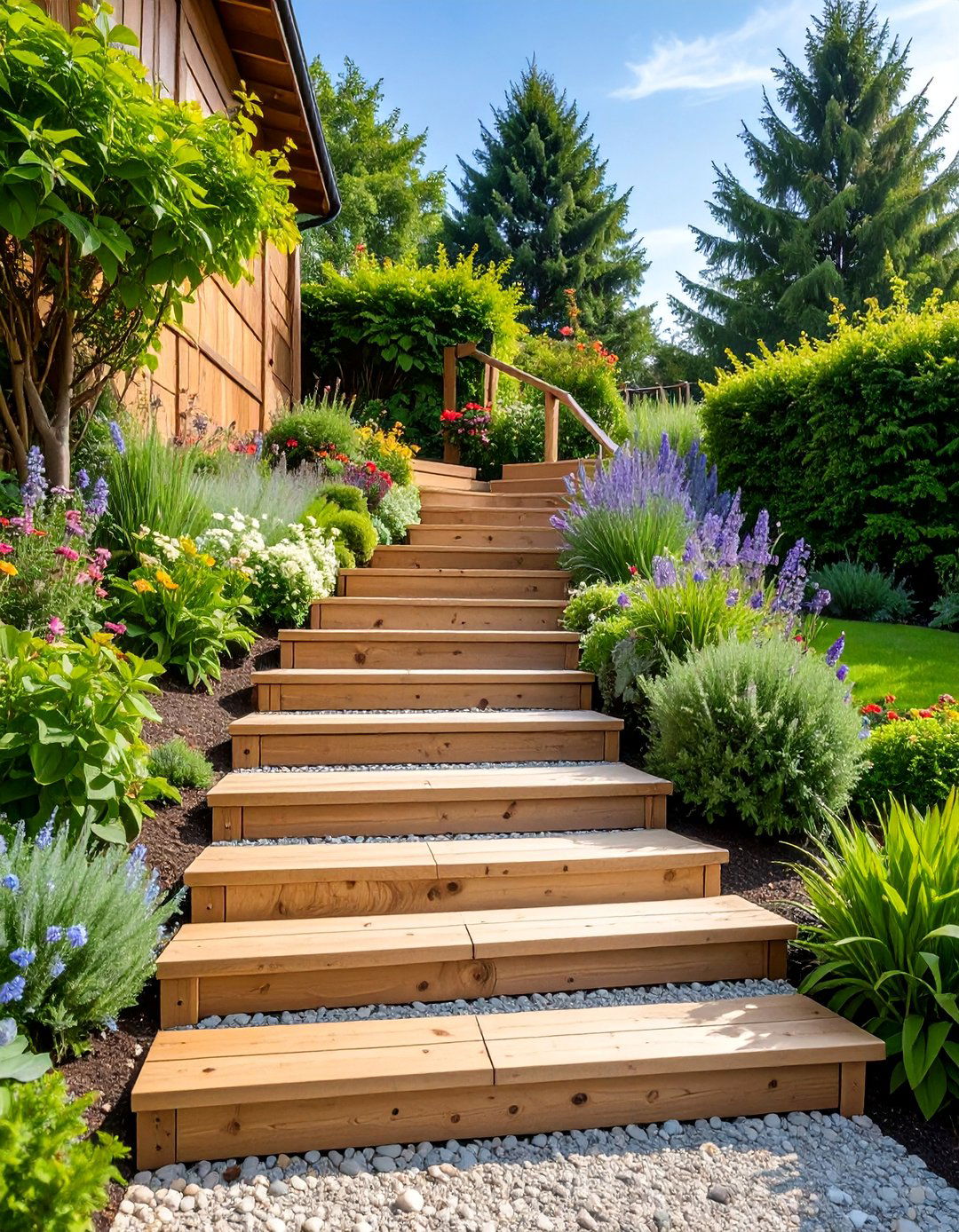
Transform challenging slopes into accessible pathways using sleepers as natural step treads that blend harmoniously with garden surroundings. These timber steps provide safe navigation between different garden levels while maintaining rustic character that complements both traditional and contemporary landscapes. Cut sleepers to appropriate widths and secure with landscape screws for stability. Fill behind each step with compacted gravel for drainage and structural support. The 200mm height works perfectly for comfortable foot traffic, while the substantial width accommodates multiple users. Soften the appearance by planting low-growing plants in gaps or alongside steps. Consider adding outdoor lighting for evening safety and enhanced ambiance in your garden circulation routes.
4. Sleeper Pond and Water Feature Frameworks

Construct stunning water features using sleepers as structural frameworks that create naturalistic pond edges with enduring appeal. Stack sleepers to form rectangular or custom-shaped pond walls, then line with quality pond liner for water retention. The timber framework provides excellent support for liner edges while offering seating opportunities around water features. Choose new, untreated sleepers for fish-safe environments, avoiding reclaimed railway sleepers that may contain harmful chemicals. Integrate pumps and filtration systems within sleeper construction for clean water circulation. Surround pond areas with complementary plantings and perhaps decorative stones to create peaceful garden retreats. These water features become focal points that attract wildlife while providing soothing sounds throughout your garden space.
5. Contemporary Sleeper Garden Bench Seating
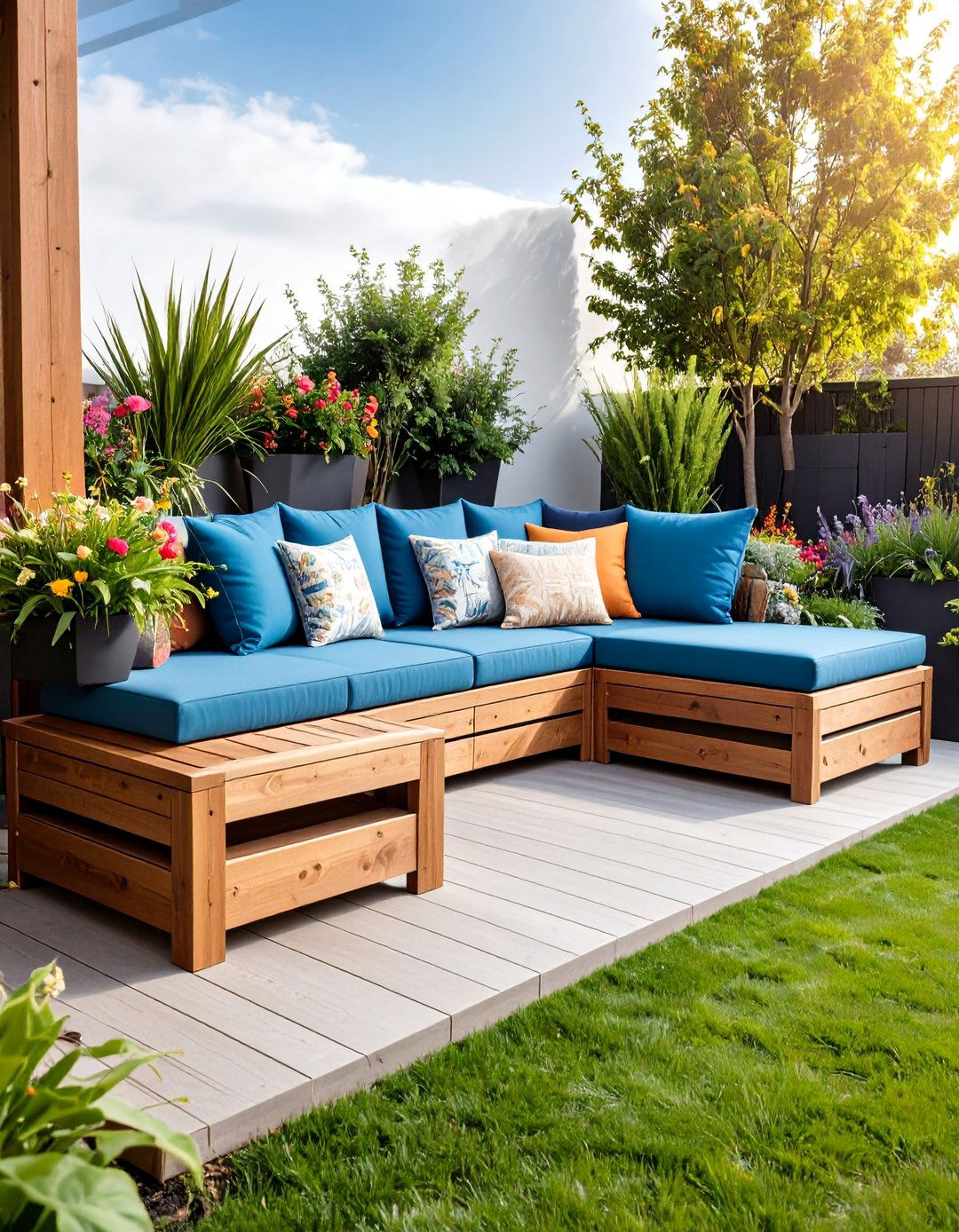
Design custom garden seating using sleepers that perfectly fits your outdoor space while providing comfortable gathering areas for relaxation and entertainment. Stack sleepers horizontally to create bench height, typically 450mm, with additional layers forming backrests for enhanced comfort. Sand all surfaces smooth to prevent splinters and apply quality exterior wood treatment for weather protection. These benches suit various garden styles, from minimalist contemporary to rustic country themes. Position strategically to take advantage of garden views, morning sun, or evening shade. Add weatherproof cushions for extra comfort during extended outdoor sessions. The substantial nature of sleeper benches ensures stability while creating architectural elements that anchor garden design schemes.
6. Vertical Sleeper Privacy Screening
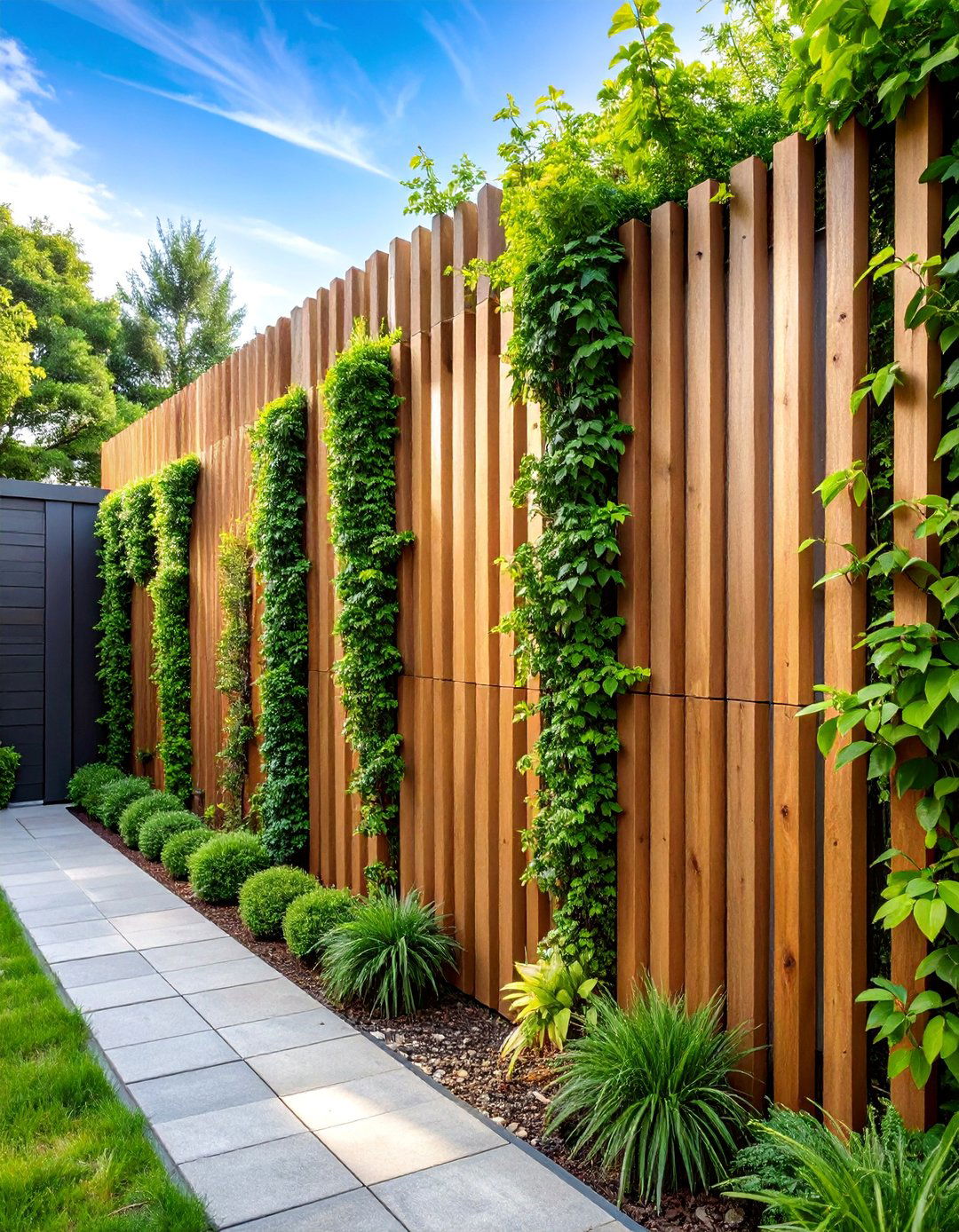
Create intimate garden spaces using sleepers positioned vertically as stylish privacy screens that define outdoor rooms while maintaining natural aesthetics. These screens effectively block unwanted views while allowing air circulation and partial light penetration between timber gaps. Vary sleeper heights for visual interest, creating rhythmic patterns that add architectural drama to garden boundaries. Secure bases in concrete footings for stability, spacing sleepers evenly for consistent appearance. The natural wood grain and substantial presence of sleepers creates more appealing screening than traditional fencing options. Integrate climbing plants like clematis or jasmine to soften the structure over time. These screens work particularly well for creating secluded seating areas, hiding utility areas, or defining property boundaries with style.
7. Sleeper Herb Garden Spiral Design
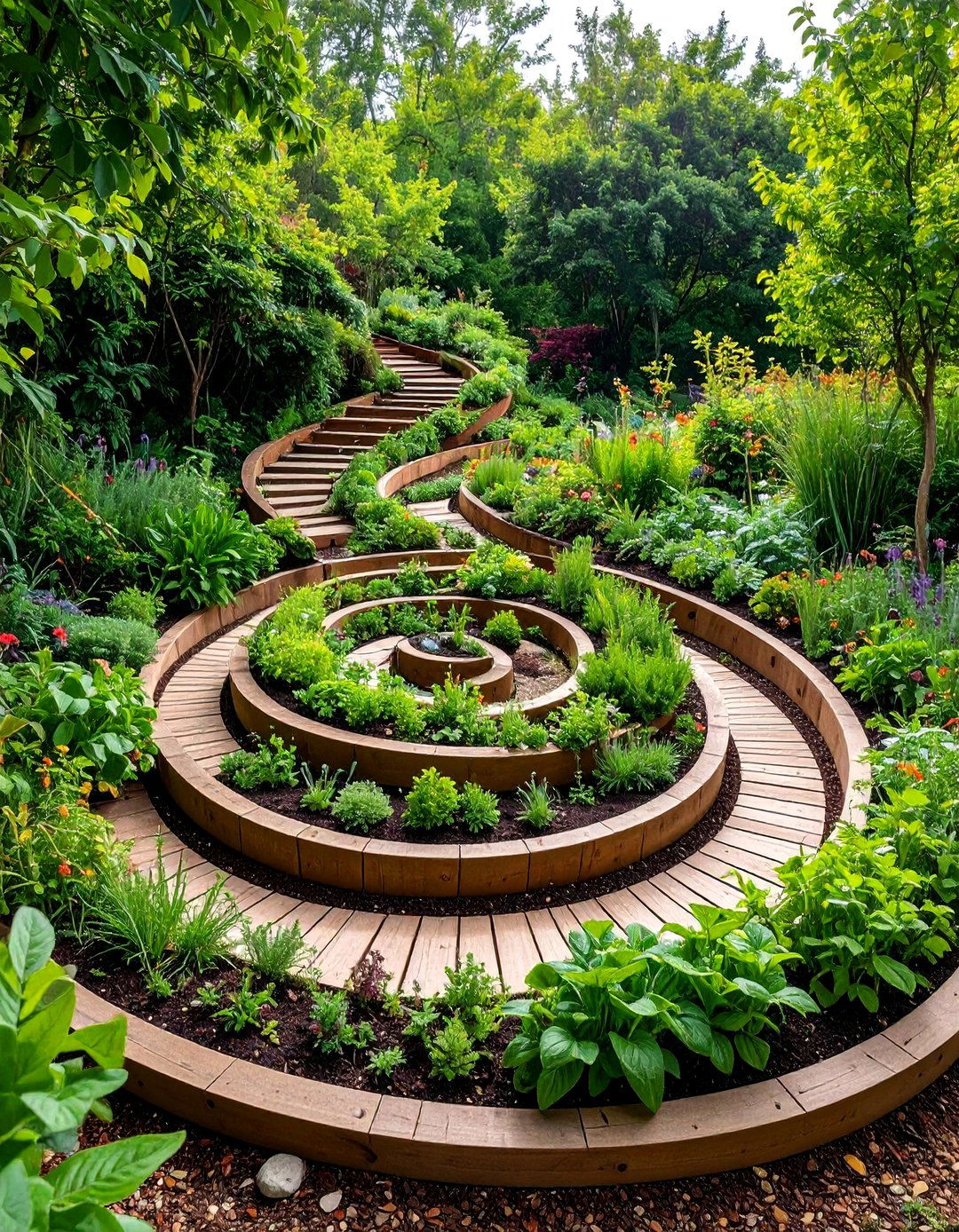
Construct an attractive spiral herb garden using sleepers arranged in decreasing circles that maximize growing space while creating a stunning garden centerpiece. This design efficiently utilizes vertical space for diverse herb cultivation while providing easy access to different plant varieties. Start with largest circle at base, gradually reducing diameter as spiral ascends, typically reaching 1-1.2m height. Fill each level with appropriate growing medium, considering drainage requirements for different herbs. The spiral design creates microclimates suitable for various herb preferences, from moisture-loving parsley at the base to sun-loving rosemary at the top. This functional artwork serves as both productive garden element and attractive landscape feature that draws attention while providing fresh ingredients year-round.
8. Sleeper Pathway and Walkway Systems

Design attractive garden pathways using sleepers as stepping elements that guide movement through outdoor spaces while adding rustic character to landscape design. Lay sleepers as individual stepping stones with decorative gravel or planted areas between, or position them continuously for formal walkway appearance. Ensure proper ground preparation with sand base for stability and drainage. The substantial size of sleepers provides confident footing while their natural appearance integrates beautifully with garden plantings. Create meandering paths that encourage exploration of garden areas, or design straight routes for efficient movement between functional zones. Consider incorporating solar lighting between sleepers for evening navigation safety. These pathways withstand heavy foot traffic while requiring minimal maintenance compared to other pathway materials.
9. Tiered Sleeper Flower Display Planters
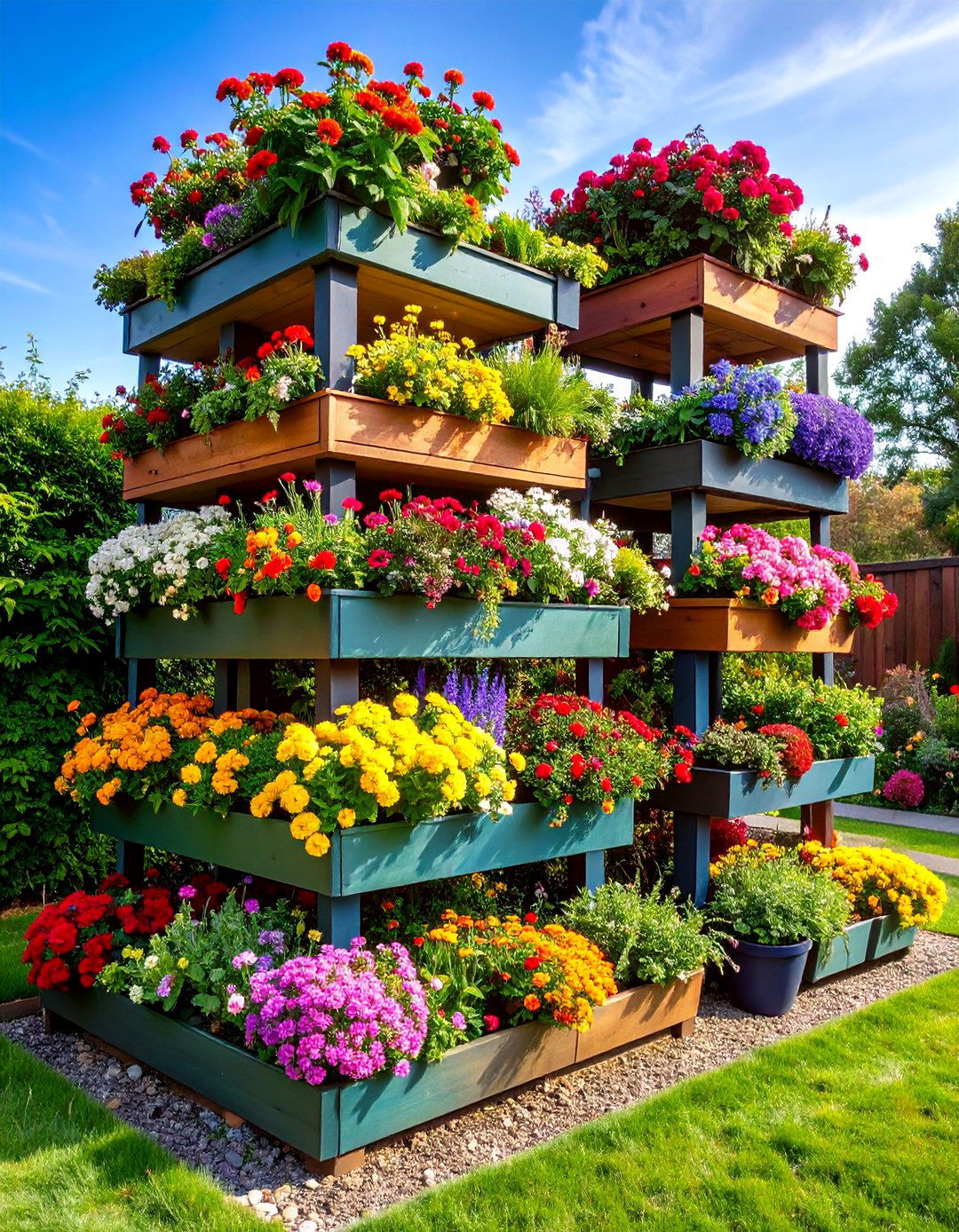
Create dramatic vertical garden displays using sleepers arranged in tiered configurations that showcase seasonal flowers while maximizing limited garden space. These stepped planter arrangements provide excellent drainage while creating backdrop effects that highlight colorful blooms throughout growing seasons. Build multiple levels using different sleeper lengths, ensuring each tier receives adequate sunlight for plant health. Line each section with landscape fabric before adding quality potting mix suited to chosen flowers. The substantial depth allows for healthy root development while the elevated position improves visibility of plantings. Rotate seasonal displays to maintain year-round interest, from spring bulbs to summer annuals and autumn flowering plants. These planters work especially well near patios or along garden boundaries where vertical impact is desired.
10. Sleeper Garden Room Dividers

Transform large garden spaces into intimate outdoor rooms using sleepers as natural dividers that create functional zones while maintaining visual connection between areas. These timber elements effectively separate dining areas from play spaces, or create quiet reading nooks within larger gardens. Position sleepers at varying heights to provide partial screening while allowing glimpses between different garden areas. The substantial presence of sleepers creates psychological boundaries without completely blocking sightlines or air circulation. Integrate built-in planters within divider designs to soften the timber with seasonal plantings. These dividers work particularly well in modern garden designs where clean lines and natural materials create sophisticated outdoor living environments. Consider incorporating lighting elements within divider structures for evening ambiance.
11. Reclaimed Railway Sleeper Fire Pit Surrounds
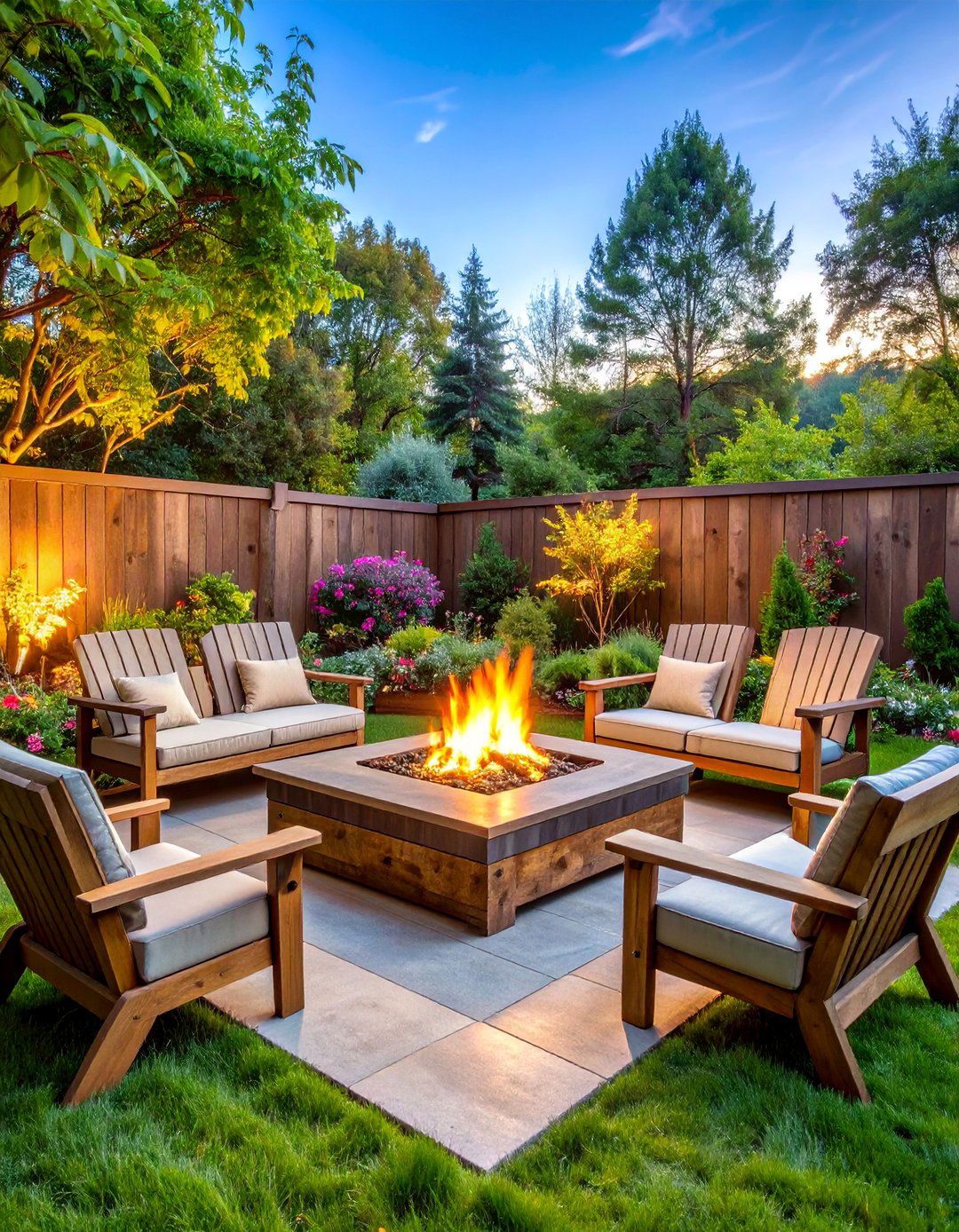
Design cozy gathering spaces using reclaimed railway sleepers as seating and safety barriers around fire pits that create perfect evening entertainment areas. The weathered character of reclaimed sleepers adds authentic rustic appeal while providing comfortable seating height around fire features. Arrange sleepers in square or circular patterns, leaving gaps for air circulation and access. The substantial mass of sleepers provides excellent seating while creating safe distances from open flames. Line interior areas with fire-resistant materials for safety and easy maintenance. These installations become natural gathering points for family and friends, extending outdoor season use well into cooler months. Integrate additional lighting and perhaps outdoor storage for firewood within the sleeper surround design for complete functionality.
12. Sleeper Greenhouse Base and Foundation

Create stable, level foundations for greenhouse installations using sleepers as robust base frameworks that provide excellent drainage and structural support. This approach eliminates the need for concrete foundations while creating flexible installation options that can accommodate different greenhouse sizes and styles. Level the ground carefully and position sleepers to form exact greenhouse footprint dimensions. The natural properties of treated sleepers resist moisture while providing thermal mass that helps moderate temperature fluctuations. Gaps between sleepers allow excellent drainage while preventing water accumulation around greenhouse bases. This foundation method suits both temporary and permanent greenhouse installations, offering easy modification possibilities as garden needs change. The natural appearance of sleeper foundations integrates better with garden aesthetics than concrete alternatives.
13. Curved Sleeper Garden Border Edging
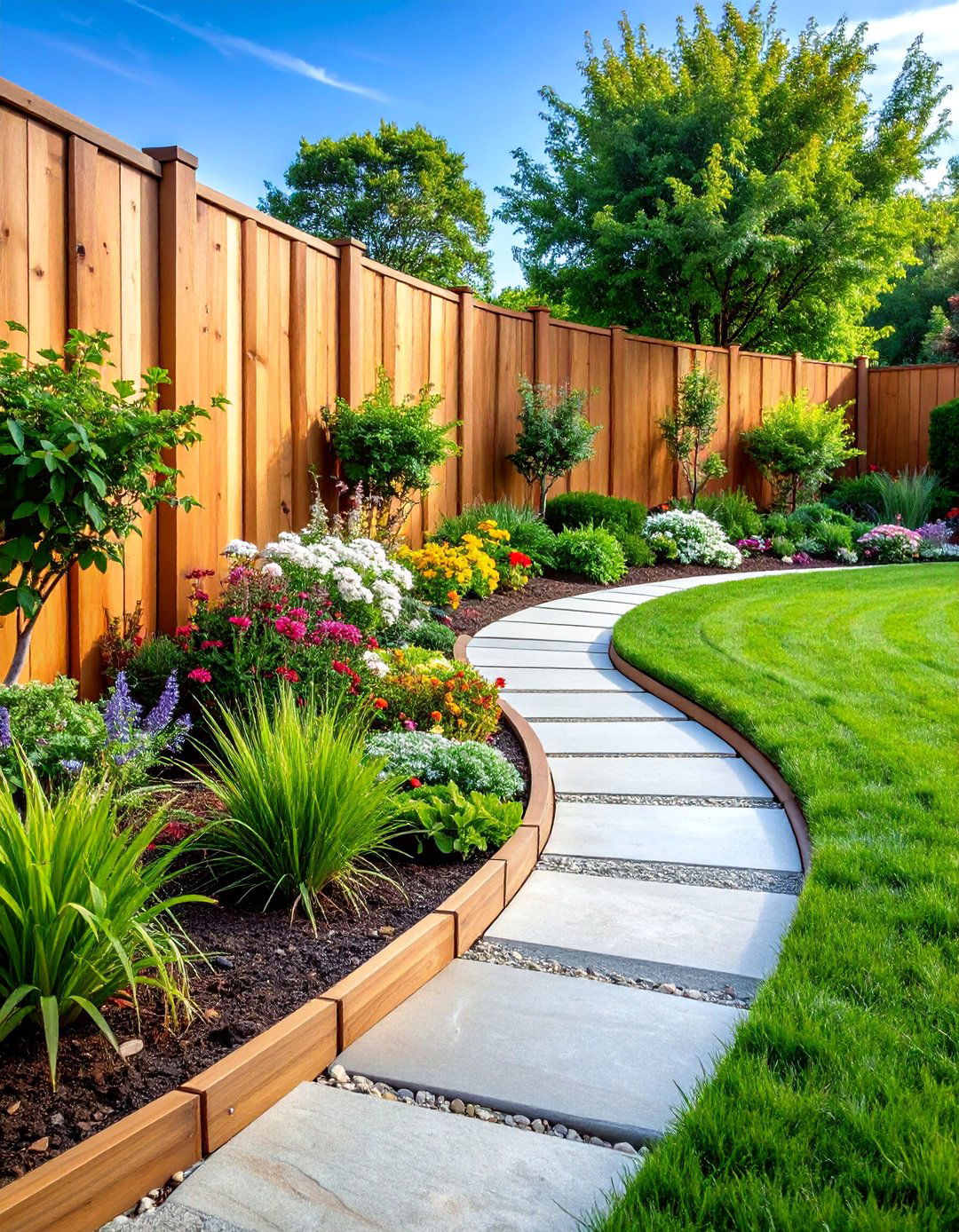
Design flowing garden borders using sleepers cut into shorter sections and positioned vertically to create graceful curved edges that define planting areas beautifully. This technique works particularly well for informal garden styles where rigid straight lines would appear too formal or harsh. Cut sleepers into 600-800mm lengths for manageable installation while maintaining visual impact. Bury approximately one-third of each section for stability, following planned curve carefully. The vertical orientation creates clean separation between lawn and planted areas while accommodating natural garden contours. This edging style suits both contemporary and traditional garden designs, providing flexibility for seasonal planting changes. Regular maintenance involves checking stability and treating exposed timber surfaces to maintain weather resistance and appearance.
14. Sleeper Compost Bin Construction
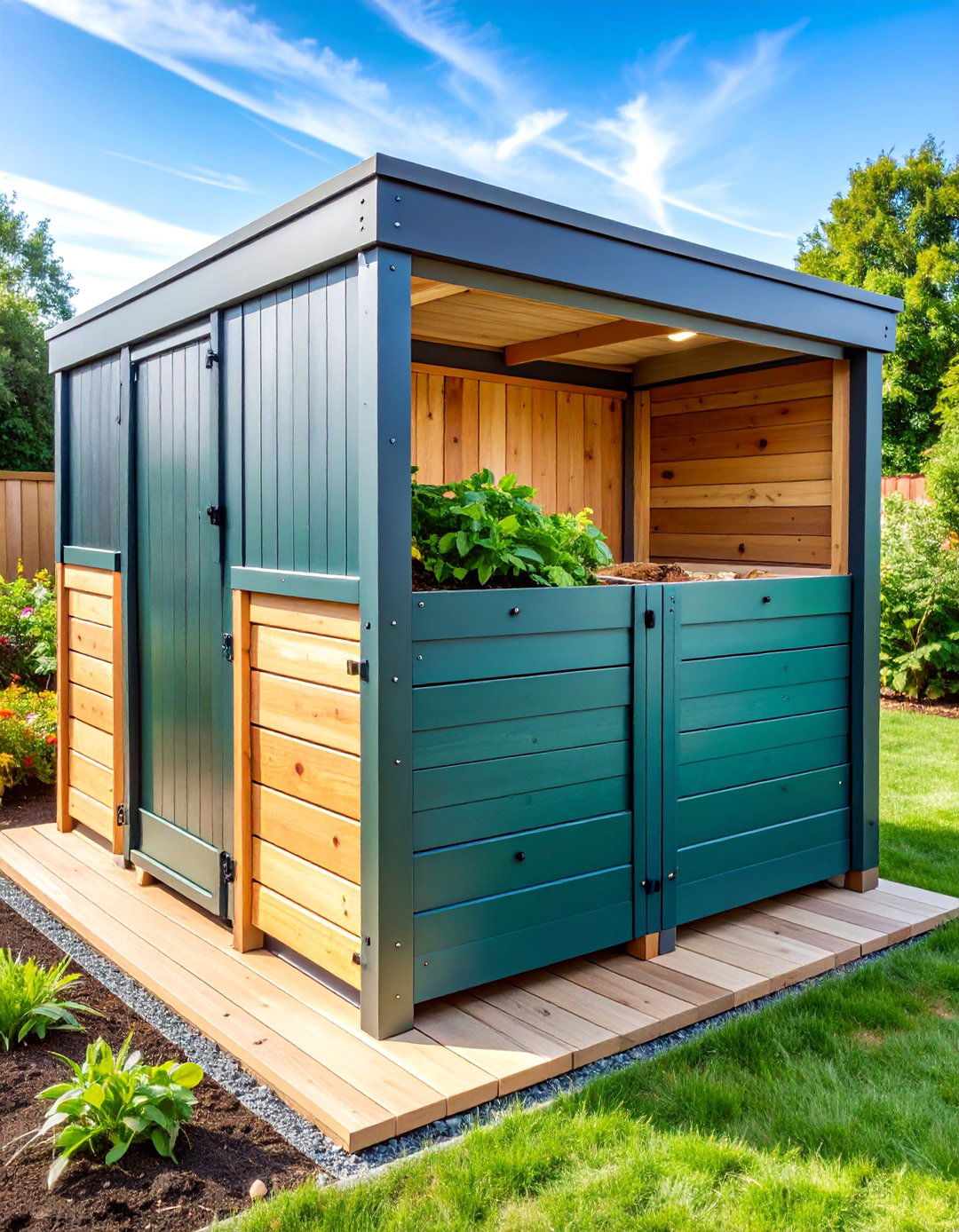
Build efficient compost systems using sleepers that provide excellent airflow while containing organic materials in organized, accessible compartments for sustainable garden management. Three-sided construction allows easy access for turning compost while maintaining neat appearance in garden utility areas. The natural properties of sleepers provide ideal conditions for composting processes while creating attractive structures that integrate well with garden landscapes. Size compartments appropriately for garden waste volumes, typically 1m x 1m for average household needs. Consider multi-bay systems for different compost stages, from fresh materials to finished compost ready for garden use. These structures encourage sustainable gardening practices while reducing waste disposal needs and creating valuable soil amendments for continued garden improvement and plant health.
15. Sleeper Garden Table and Dining Sets

Construct custom outdoor dining furniture using sleepers that perfectly matches garden proportions while providing sturdy, weather-resistant entertaining spaces for family gatherings. Design tables using horizontal sleeper arrangements with supporting framework, typically 750mm height for comfortable dining. Sand all surfaces thoroughly to prevent splinters and apply quality exterior finishes for weather protection. The substantial nature of sleeper furniture ensures stability during use while creating architectural presence in garden dining areas. Consider modular designs that allow reconfiguration for different group sizes or seasonal storage requirements. Integrate bench seating using similar sleeper construction for cohesive furniture groupings. These custom pieces often cost less than comparable purchased furniture while offering exact size and style specifications for individual garden requirements.
16. Sleeper Greenhouse Growing Bench Systems
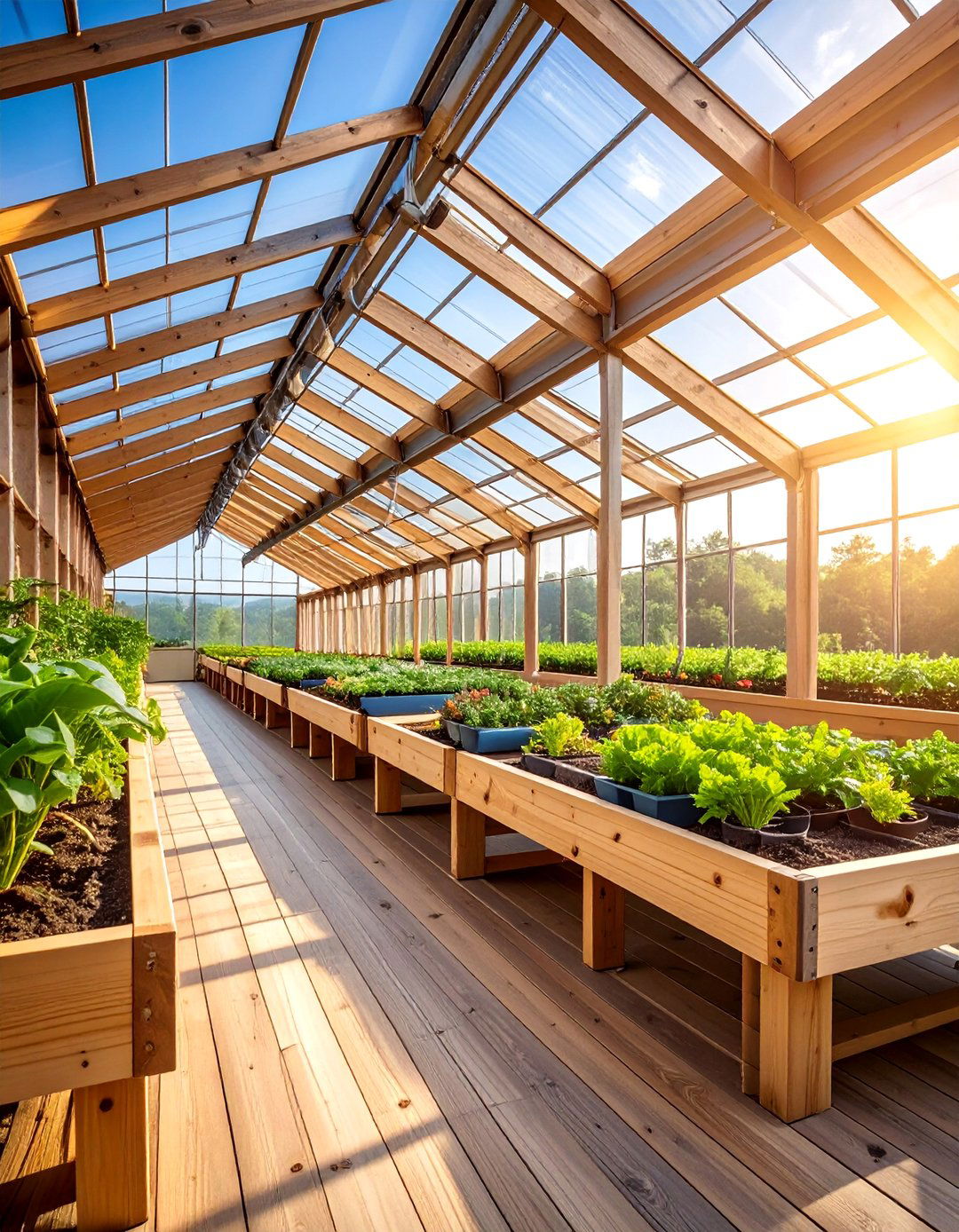
Create productive growing spaces within greenhouses using sleepers as sturdy bench frameworks that maximize cultivation area while providing comfortable working heights. These benches support significant weight from multiple plant containers while ensuring excellent drainage through gaps between sleepers. Standard bench height of 850-900mm reduces back strain during potting and plant care activities. The thermal mass of sleepers helps moderate temperature fluctuations, benefiting plant growth conditions. Design benches with removable sections for easy cleaning and maintenance access. Include storage areas beneath benches for tools and supplies, maximizing greenhouse space efficiency. These structures accommodate both seasonal growing programs and year-round cultivation systems, supporting various container sizes and plant types throughout different growing cycles.
17. Vertical Sleeper Garden Art Installations

Transform sleepers into striking garden sculptures and artistic elements that serve as focal points while adding height and visual interest to landscape designs. Position sleepers vertically at different heights to create rhythmic patterns or sculptural groupings that complement garden plantings beautifully. Weather naturally ages sleeper surfaces, creating evolving artistic elements that change character throughout seasons. These installations work particularly well in contemporary garden designs where architectural elements balance softer planted areas. Consider incorporating lighting elements within sculptures for dramatic evening effects. The substantial presence of vertical sleepers creates strong visual anchors that help organize garden views and direct attention to specific areas. Integration with plantings softens geometric forms while maintaining structural impact essential for successful garden art installations.
18. Sleeper Sandbox and Play Area Borders

Design safe, contained play spaces for children using sleepers as attractive borders that define play areas while integrating beautifully with overall garden design themes. The substantial size of sleepers creates effective barriers while providing comfortable seating for supervising adults. Choose new, untreated sleepers for child safety, avoiding reclaimed railway sleepers that may contain harmful preservatives. Standard height of 200-300mm contains play materials effectively while allowing easy access for children. Include drainage considerations in base preparation to prevent water accumulation. Corner positions offer natural seating opportunities while rounded edges improve safety. These installations encourage outdoor play while maintaining garden aesthetics, creating zones where children can explore safely while parents enjoy garden activities nearby.
19. Sleeper Garden Storage Shed Foundations
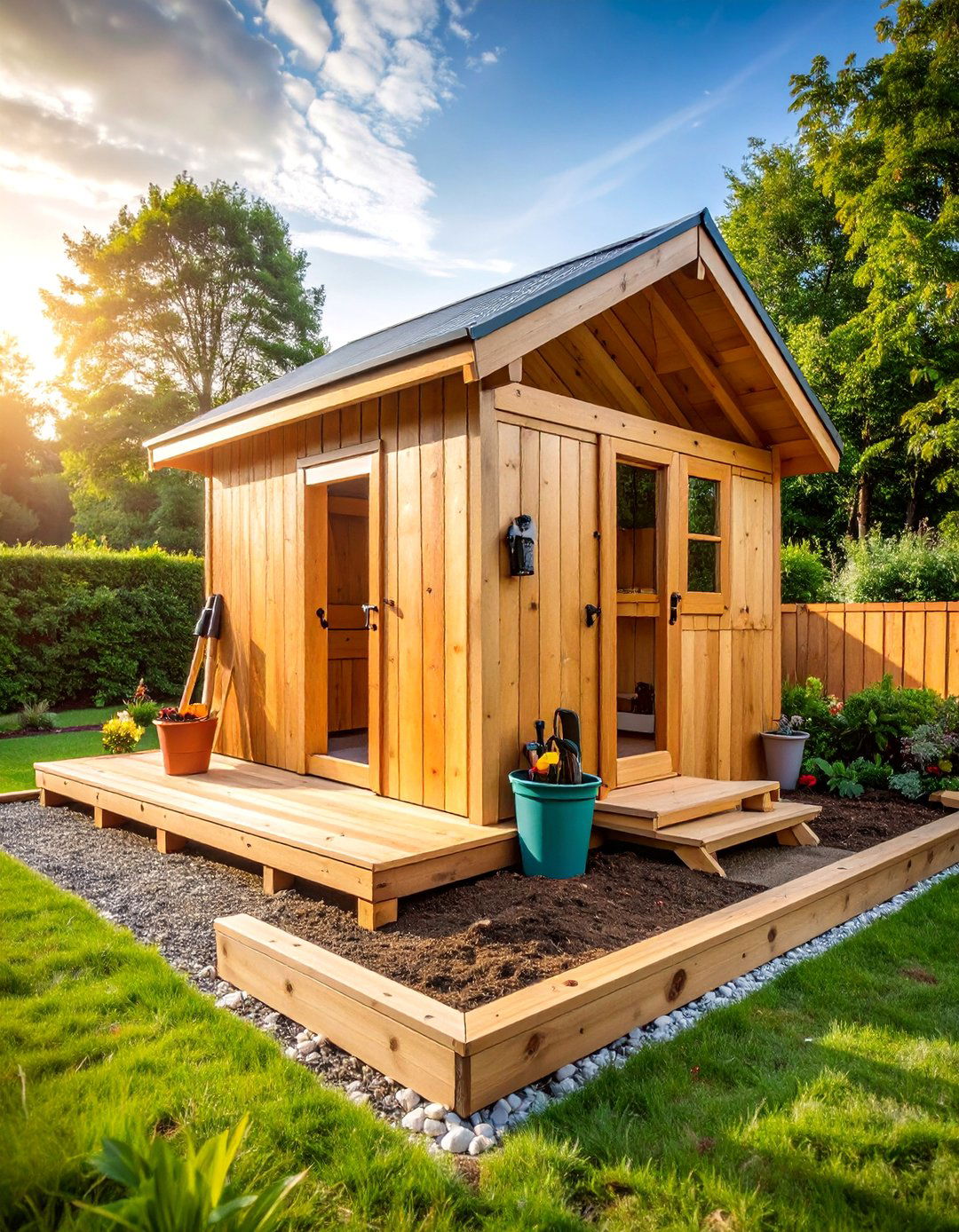
Provide stable, well-drained foundations for garden storage buildings using sleepers arranged to support shed structures while eliminating concrete requirements completely. Level sleeper foundations carefully to ensure proper door and window operation while preventing structural stress. The natural properties of pressure-treated sleepers resist moisture while providing excellent load-bearing capacity for garden buildings. Space sleepers according to shed manufacturer specifications, typically every 600-800mm for adequate support. This foundation method offers flexibility for temporary installations or permanent structures, accommodating various shed sizes and styles. Include weed barrier beneath sleepers to prevent vegetation growth while maintaining drainage. These foundations often prove more cost-effective than concrete alternatives while providing equivalent structural support for typical garden storage requirements.
20. Sleeper Terraced Garden Systems

Create dramatic multi-level garden displays using sleepers to construct terraced planting areas that transform sloped terrain into productive, accessible growing spaces. Each terrace level provides flat planting area while sleeper retaining walls prevent soil erosion and create visual structure. Design terrace widths to accommodate intended plants and maintenance access, typically 1-2m deep for effective cultivation. The substantial nature of sleepers provides excellent soil retention while creating attractive landscaping elements that age beautifully. Include proper drainage between levels to prevent water accumulation and potential wall failure. These systems work particularly well for hillside properties where level planting space is limited, creating opportunities for diverse plant combinations while managing challenging topography effectively through sustainable construction methods.
21. Sleeper Garden Gate and Entry Features

Design impressive garden entrances using sleepers as substantial gate posts and architectural elements that create welcoming transition points between different garden areas. The robust nature of sleepers provides excellent support for gates while creating strong visual statements that define property boundaries attractively. Position sleepers vertically, ensuring adequate foundation depth for stability, typically one-third total length underground. These installations accommodate various gate styles, from rustic farm gates to contemporary metal designs. Include integrated lighting within sleeper posts for evening safety and aesthetic appeal. The natural aging process of sleepers creates character over time while maintaining structural integrity. Consider incorporating planter elements within gate post designs for seasonal color displays that enhance entrance areas throughout the year.
22. Sleeper Greenhouse Rainwater Collection Systems
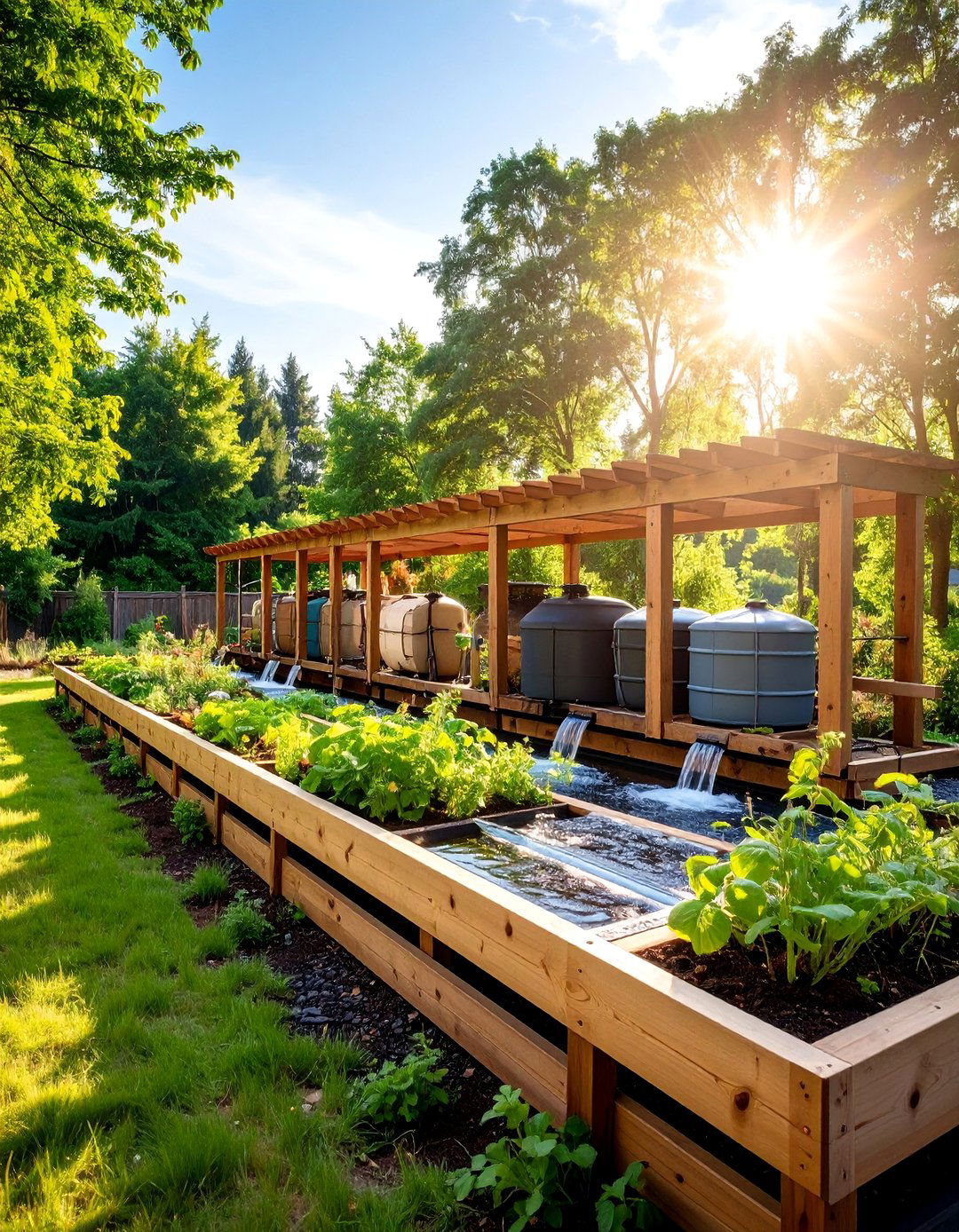
Construct efficient water collection systems using sleepers as structural frameworks for rainwater harvesting that supports sustainable garden irrigation while reducing water costs. These systems capture and store rainwater for greenhouse and garden use during dry periods. Design sleeper frameworks to support water storage containers while creating attractive installation that integrates with garden aesthetics. Include filtration elements within sleeper construction for water quality improvement. The substantial nature of sleepers provides excellent support for large water volumes while creating organized utility areas. Consider multiple collection points throughout garden for comprehensive water management. These installations encourage sustainable gardening practices while providing reliable irrigation sources during water restrictions or drought conditions, supporting healthy plant growth throughout challenging weather patterns.
23. Sleeper Garden Workshop Benches
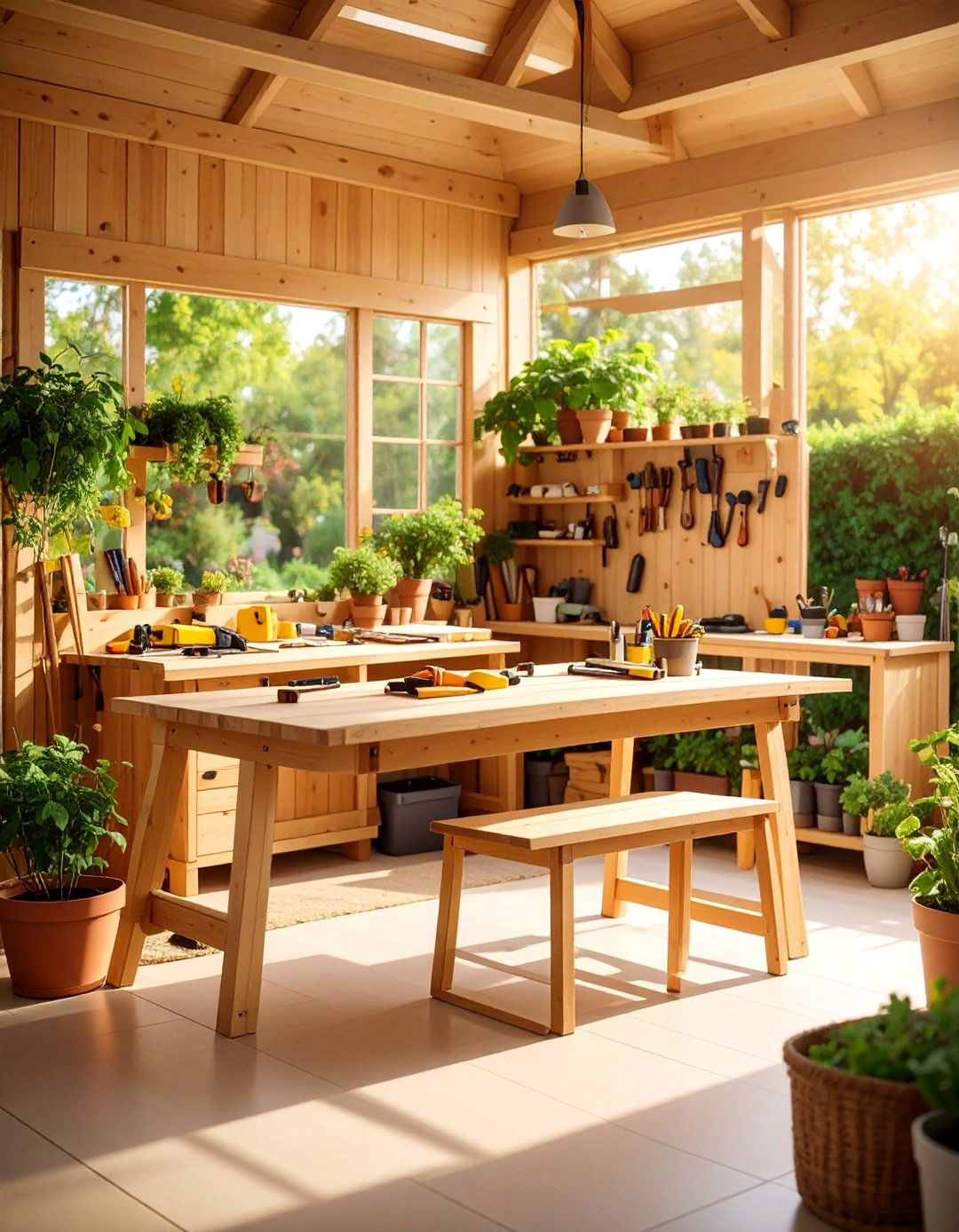
Create functional workshop spaces within garden settings using sleepers as sturdy work surfaces that withstand heavy use while providing organized tool storage solutions. These benches support various garden activities, from potting plants to maintaining tools and equipment. Standard height of 900-950mm provides comfortable working position for most garden tasks. The substantial mass of sleepers creates stable work surfaces that resist movement during use. Include integrated storage areas beneath benches for tools and supplies, maximizing workshop space efficiency. Design benches with removable sections for easy reconfiguration as needs change. These installations often prove more cost-effective than purchased workshop furniture while offering exact specifications for individual requirements. Quality construction ensures long-term durability under demanding garden workshop conditions.
24. Sleeper Children's Garden Learning Spaces
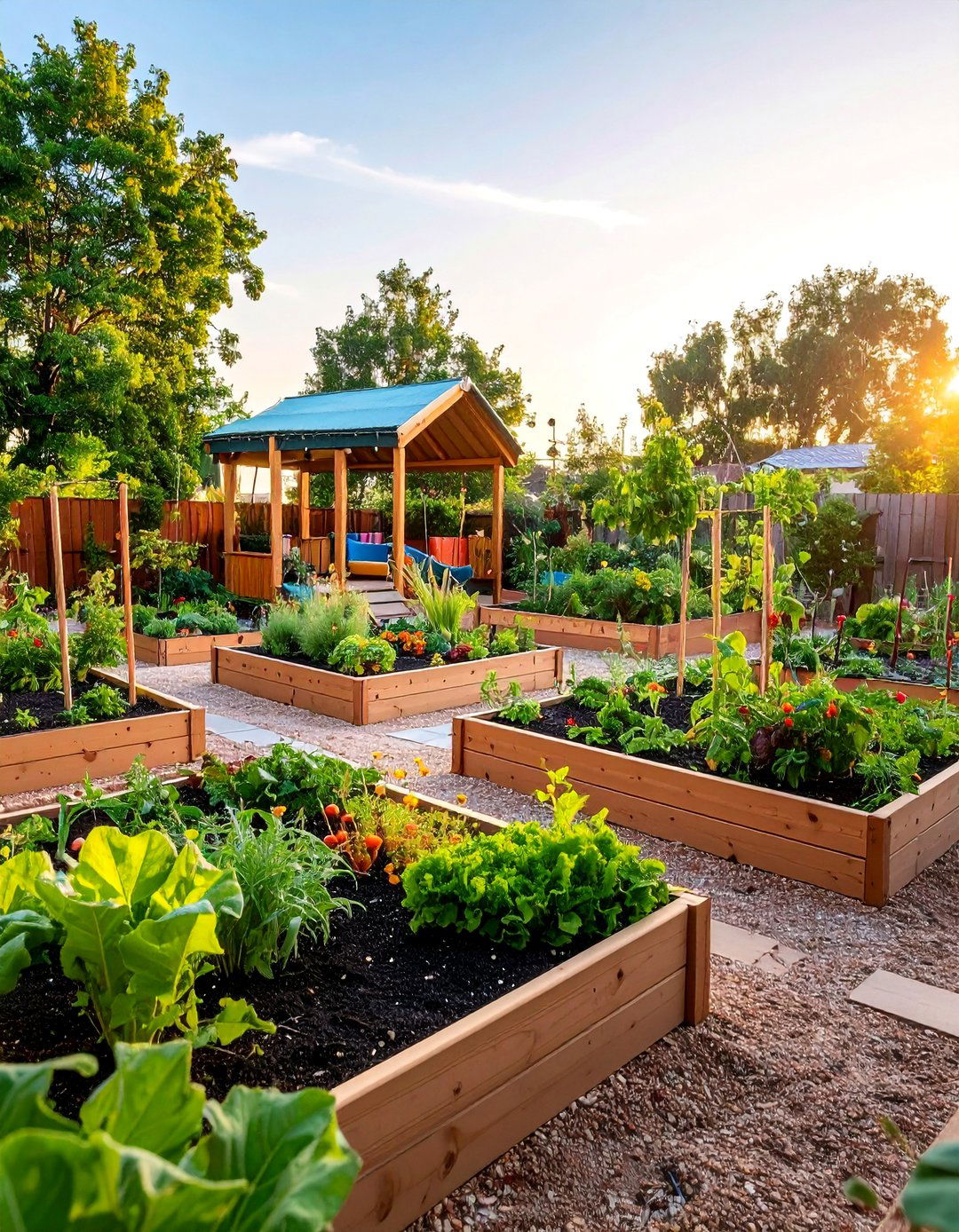
Design educational outdoor environments using sleepers to create structured learning areas where children explore nature while developing gardening skills safely. These installations include raised planting beds scaled for children, seating areas for outdoor lessons, and organized tool storage at appropriate heights. The substantial nature of sleepers provides safe boundaries while creating defined spaces for various learning activities. Include weather protection elements within sleeper construction for year-round use. Design raised beds at heights suitable for different age groups, encouraging participation in growing activities. These spaces foster environmental awareness while providing hands-on learning opportunities that connect children with natural processes. Integration with school or home education programs creates valuable outdoor classroom environments that support various learning objectives throughout different seasons.
25. Sleeper Garden Theater and Entertainment Spaces
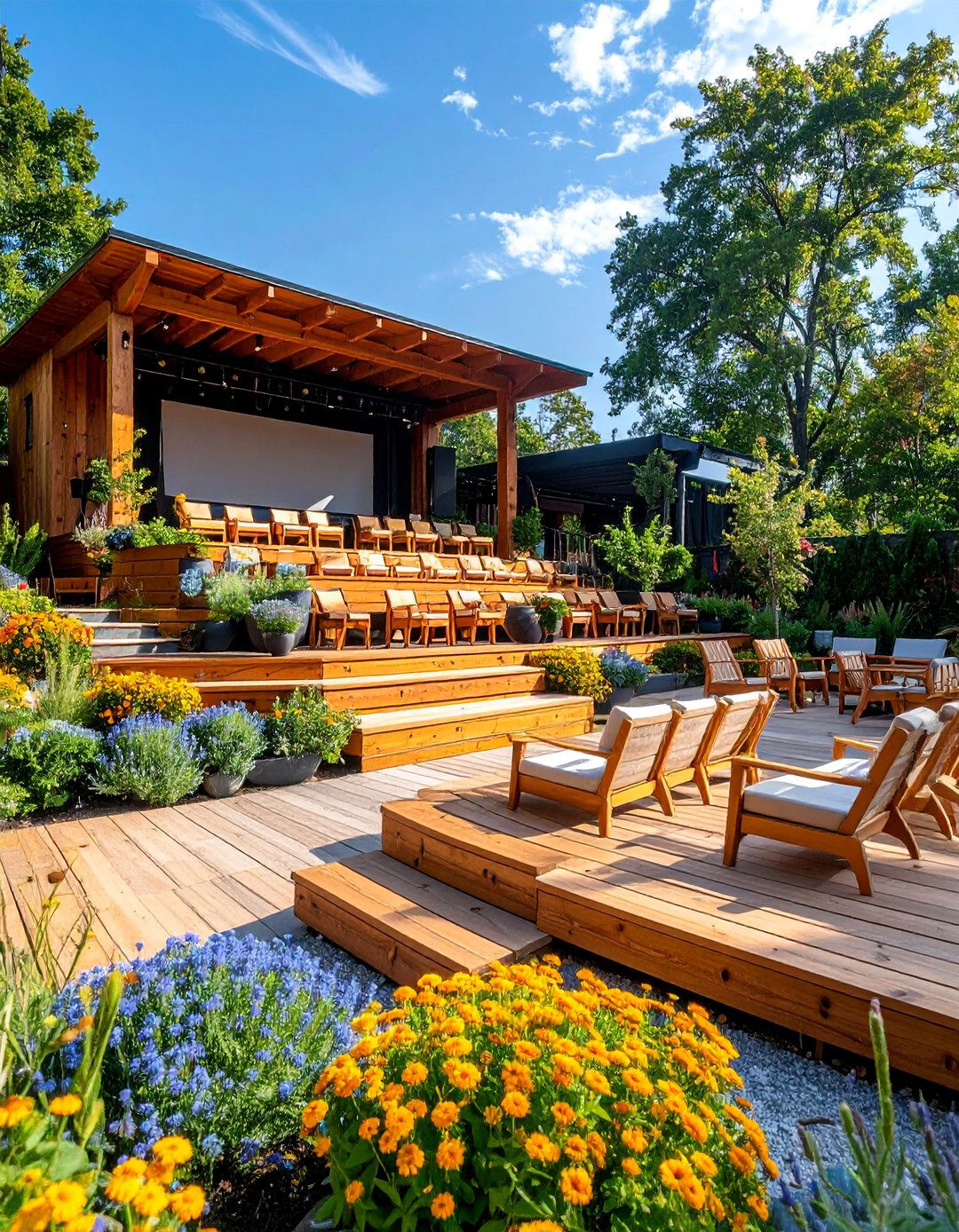
Transform garden areas into outdoor entertainment venues using sleepers to construct amphitheater-style seating and performance areas that accommodate family gatherings and community events. Design tiered seating using horizontal sleeper arrangements that provide comfortable viewing angles while integrating with garden landscapes beautifully. Include performance areas defined by sleeper borders that create natural staging zones. The substantial presence of sleepers creates architectural elements that organize large outdoor spaces effectively. Consider integrated lighting and sound system accommodation within sleeper construction for complete entertainment facilities. These installations extend outdoor living seasons while providing unique venues for celebrations, performances, and gatherings. Design flexibility allows reconfiguration for different event types while maintaining permanent landscape elements that enhance property values.
Conclusion:
Garden sleepers offer remarkable versatility for creating stunning outdoor spaces that combine practical functionality with natural beauty. From raised beds and retaining walls to creative seating solutions and water features, these robust timber elements provide endless possibilities for garden transformation. Their durability ensures long-term value while their natural appearance integrates seamlessly with various landscape styles. Whether choosing new pressure-treated sleepers or characterful reclaimed railway timber, these substantial elements anchor garden designs while supporting diverse planting schemes and outdoor activities throughout changing seasons.


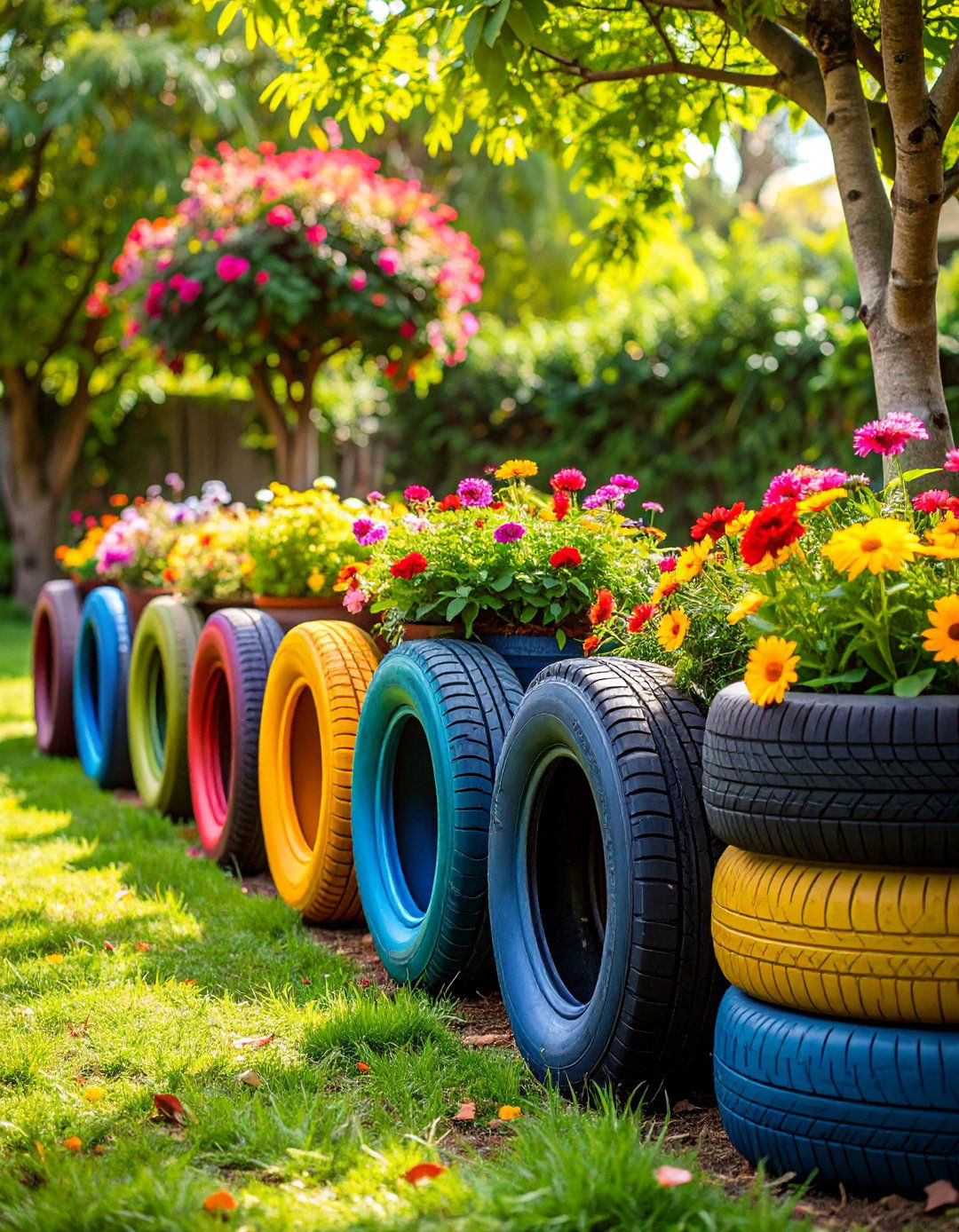
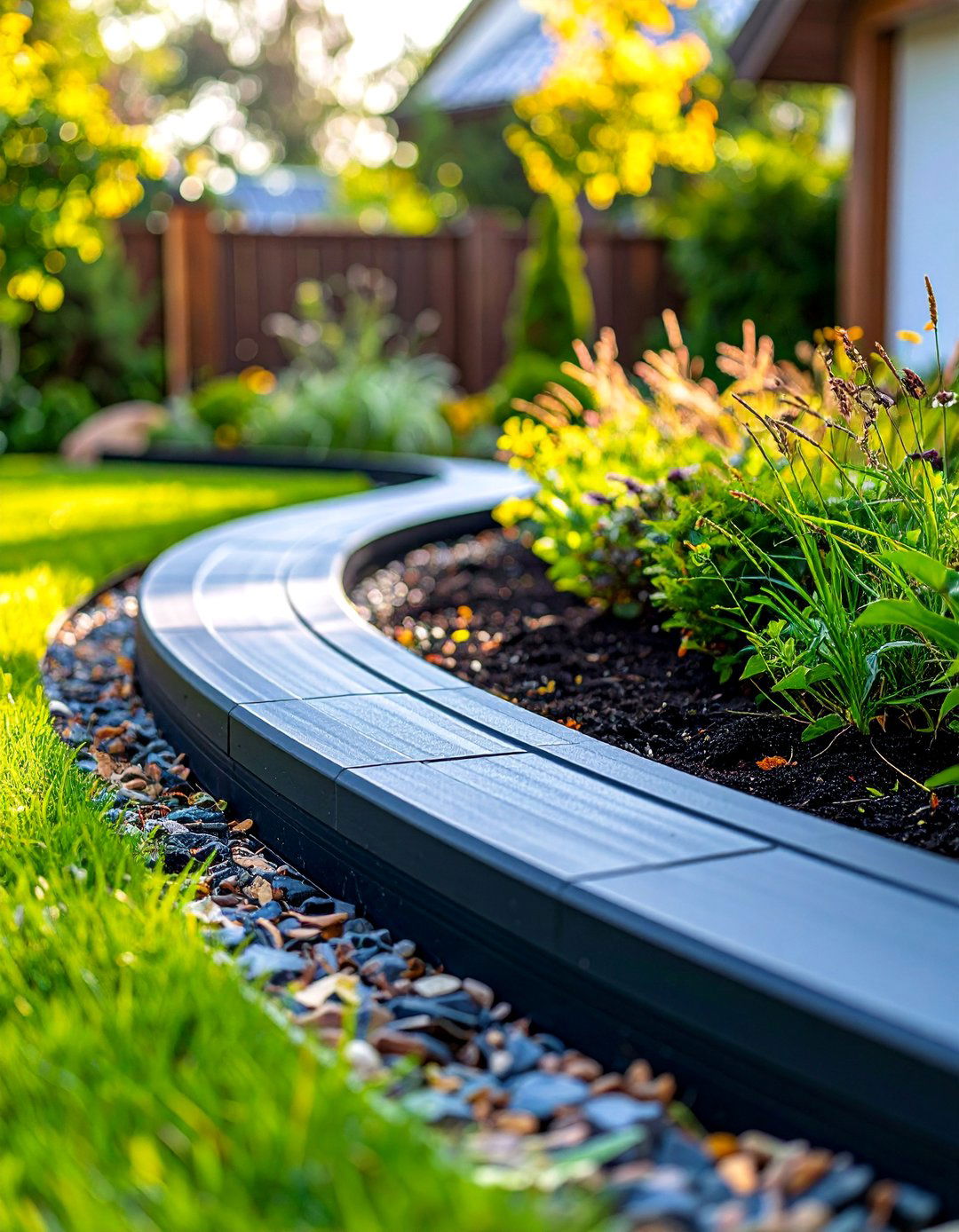

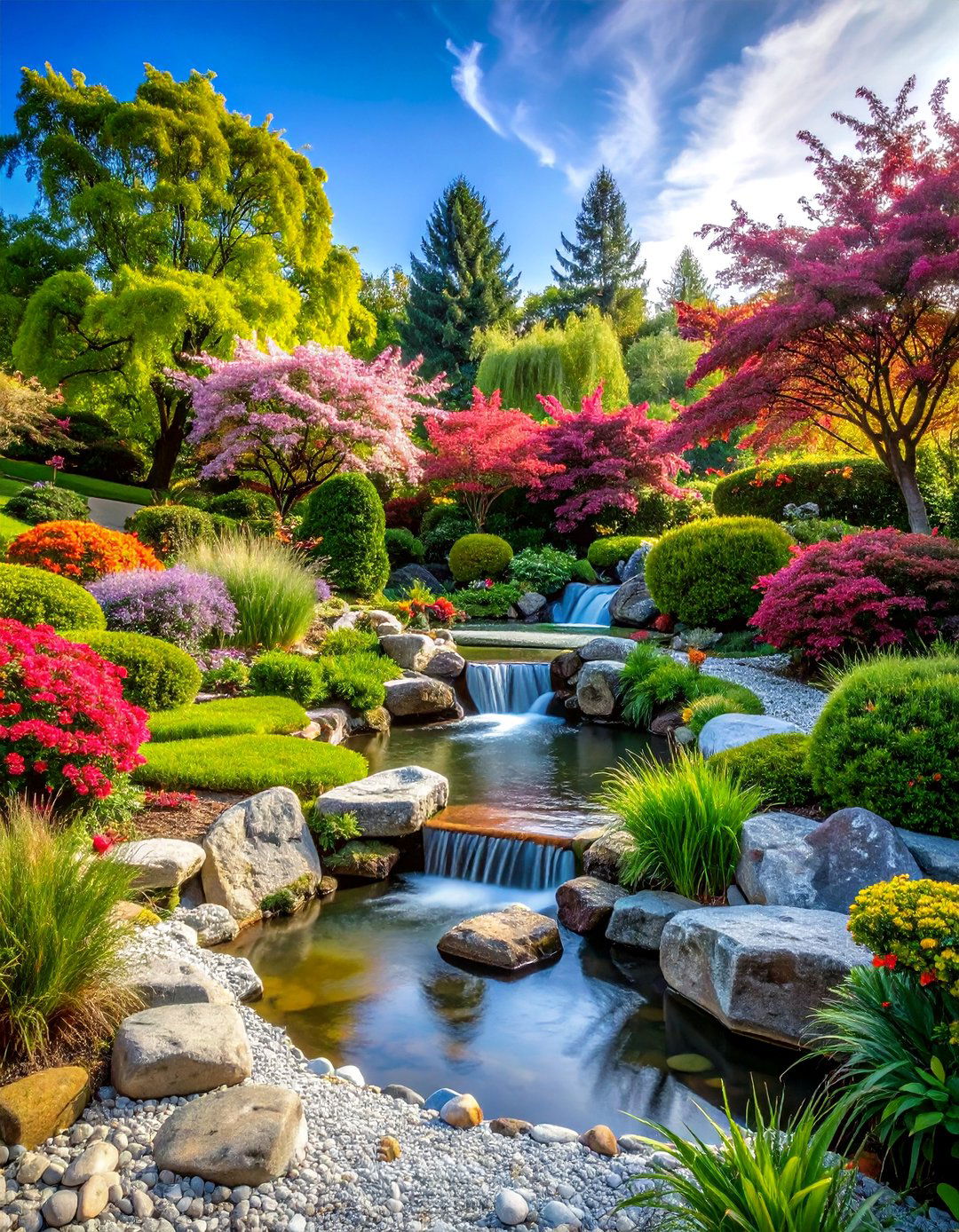

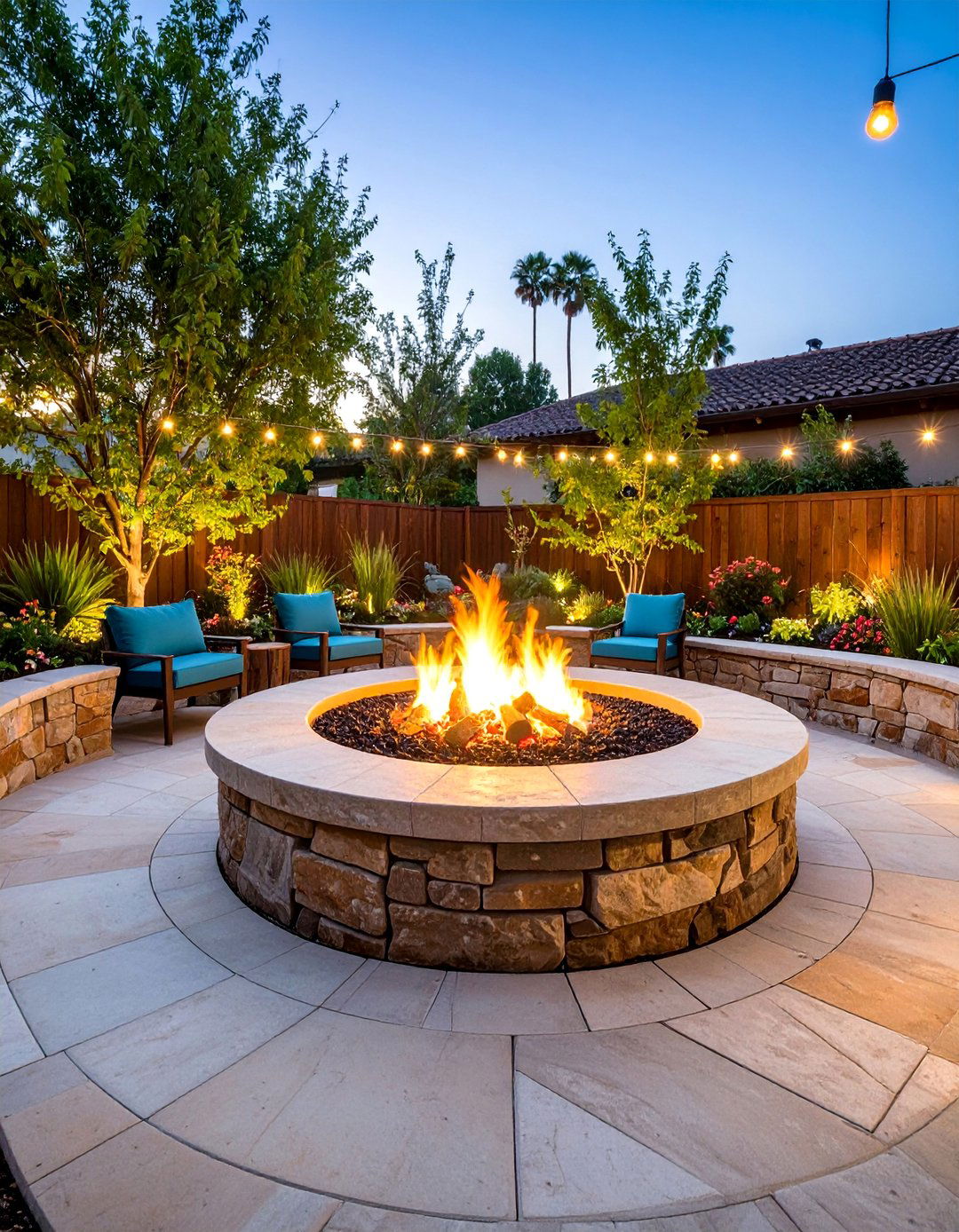
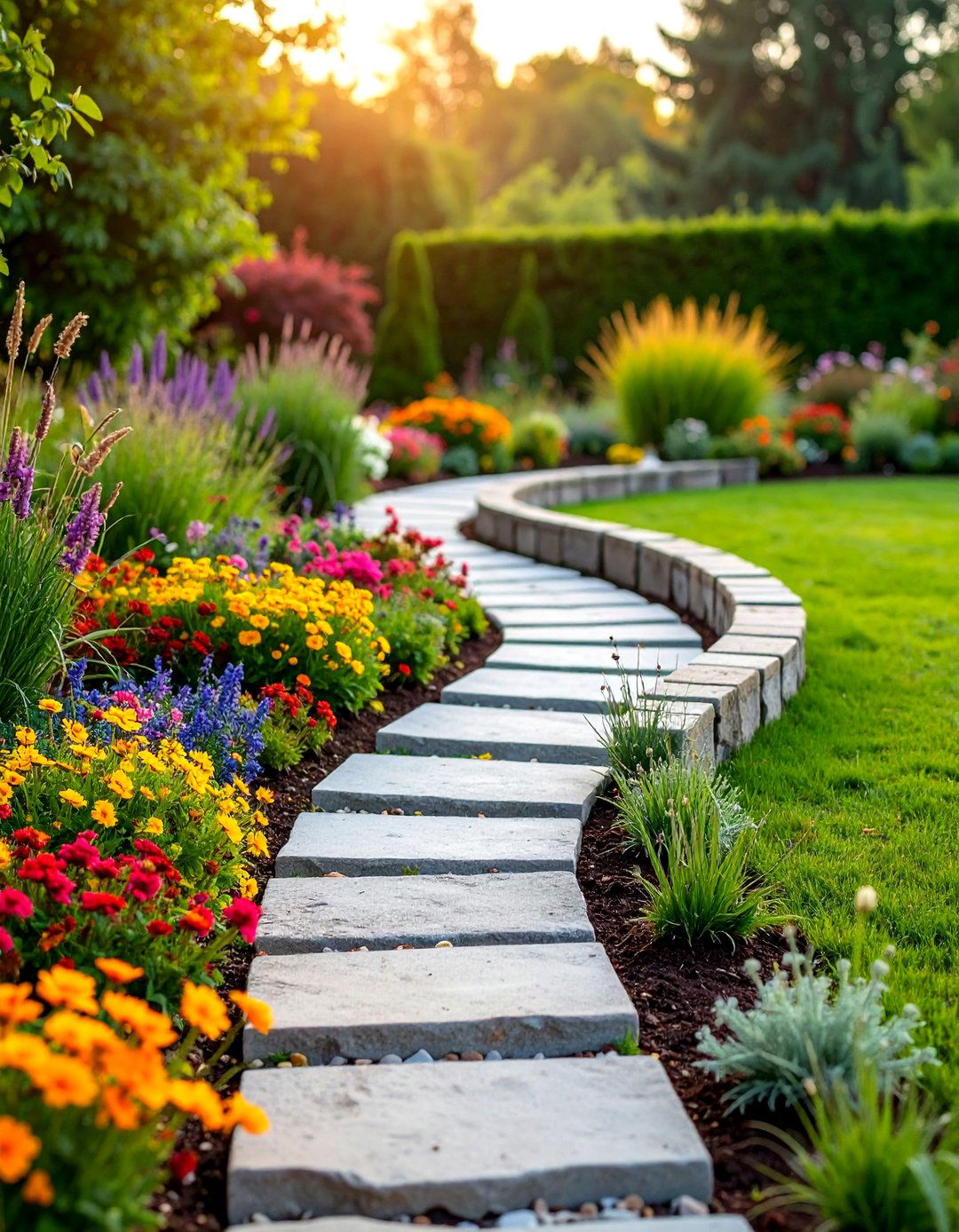

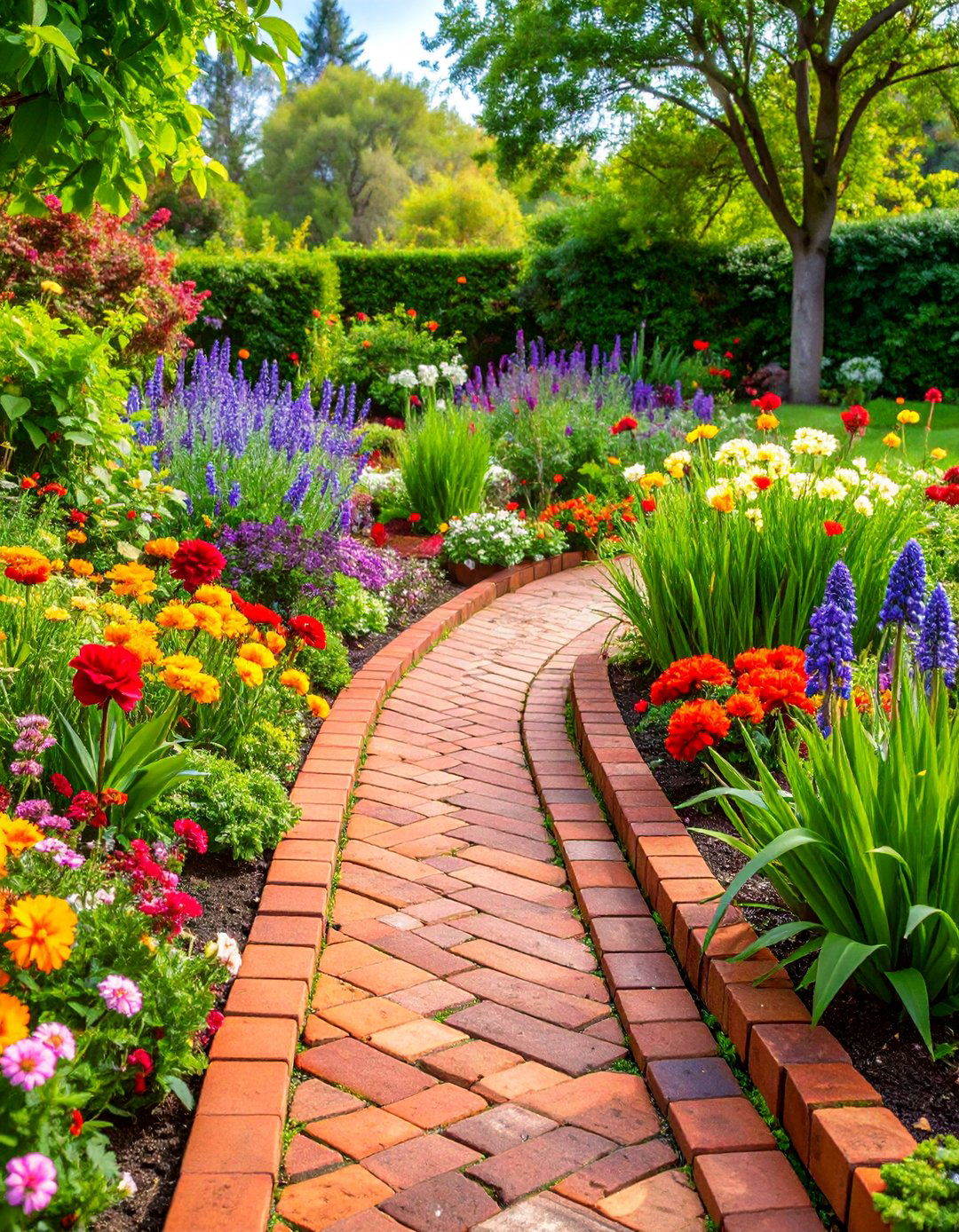
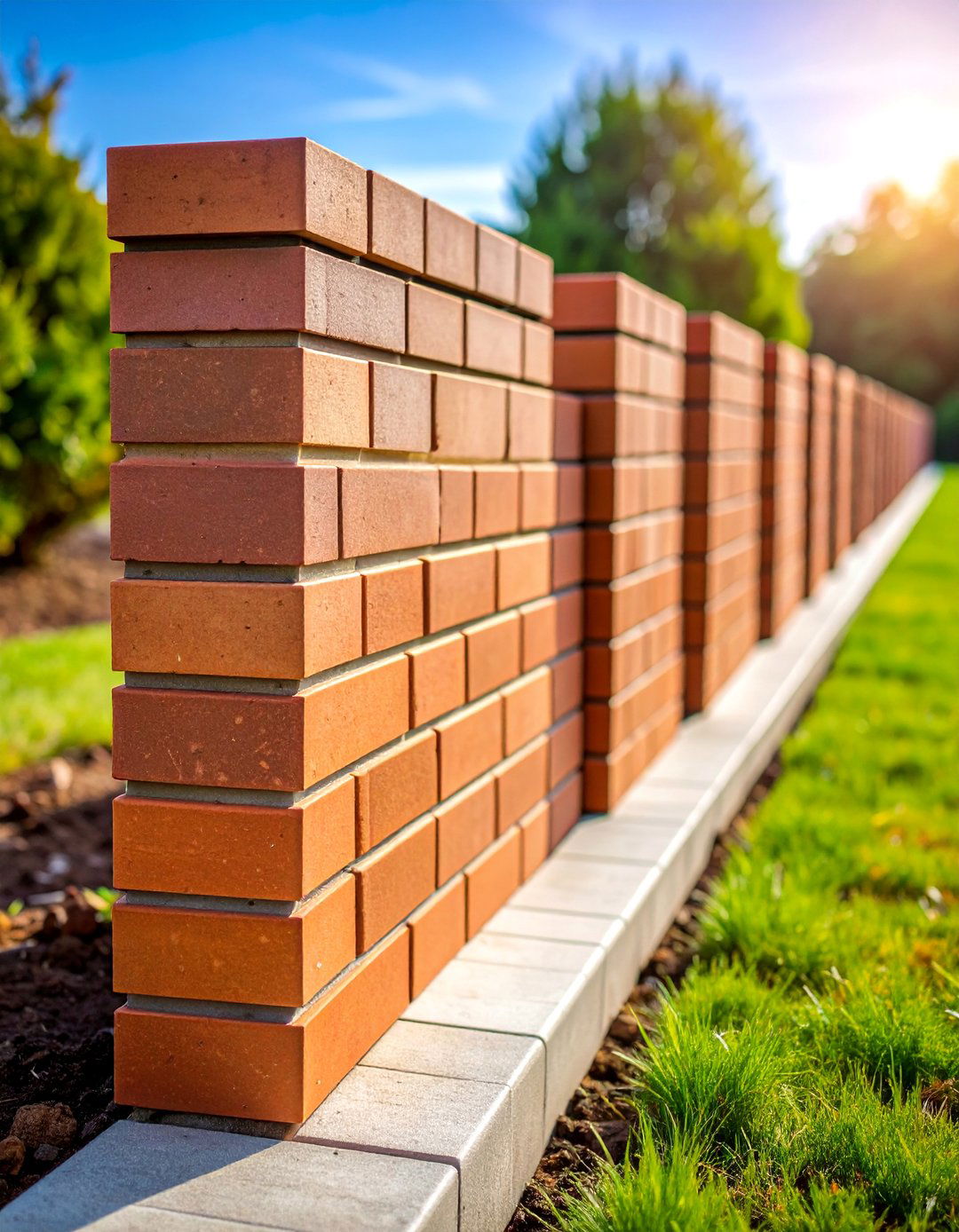
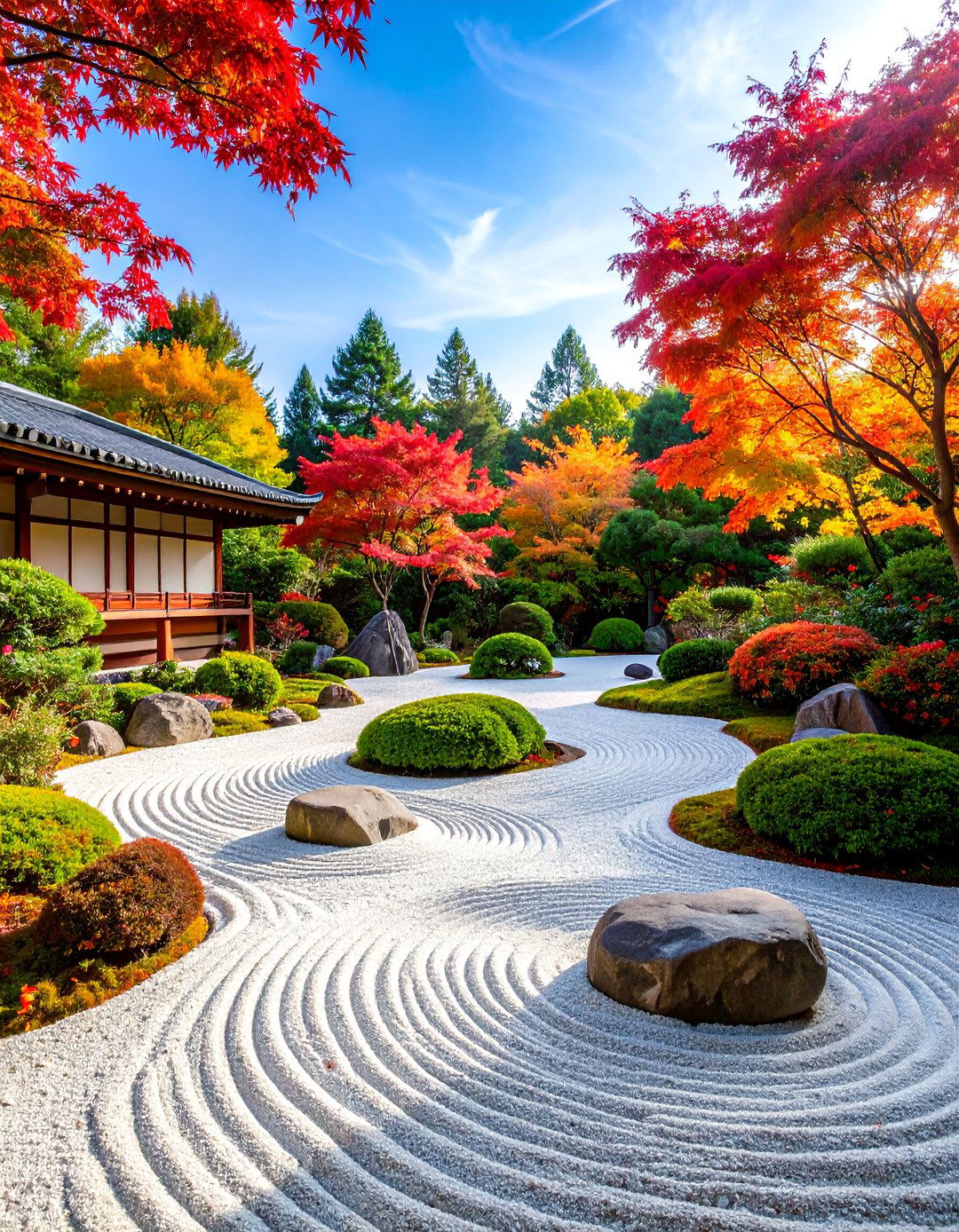
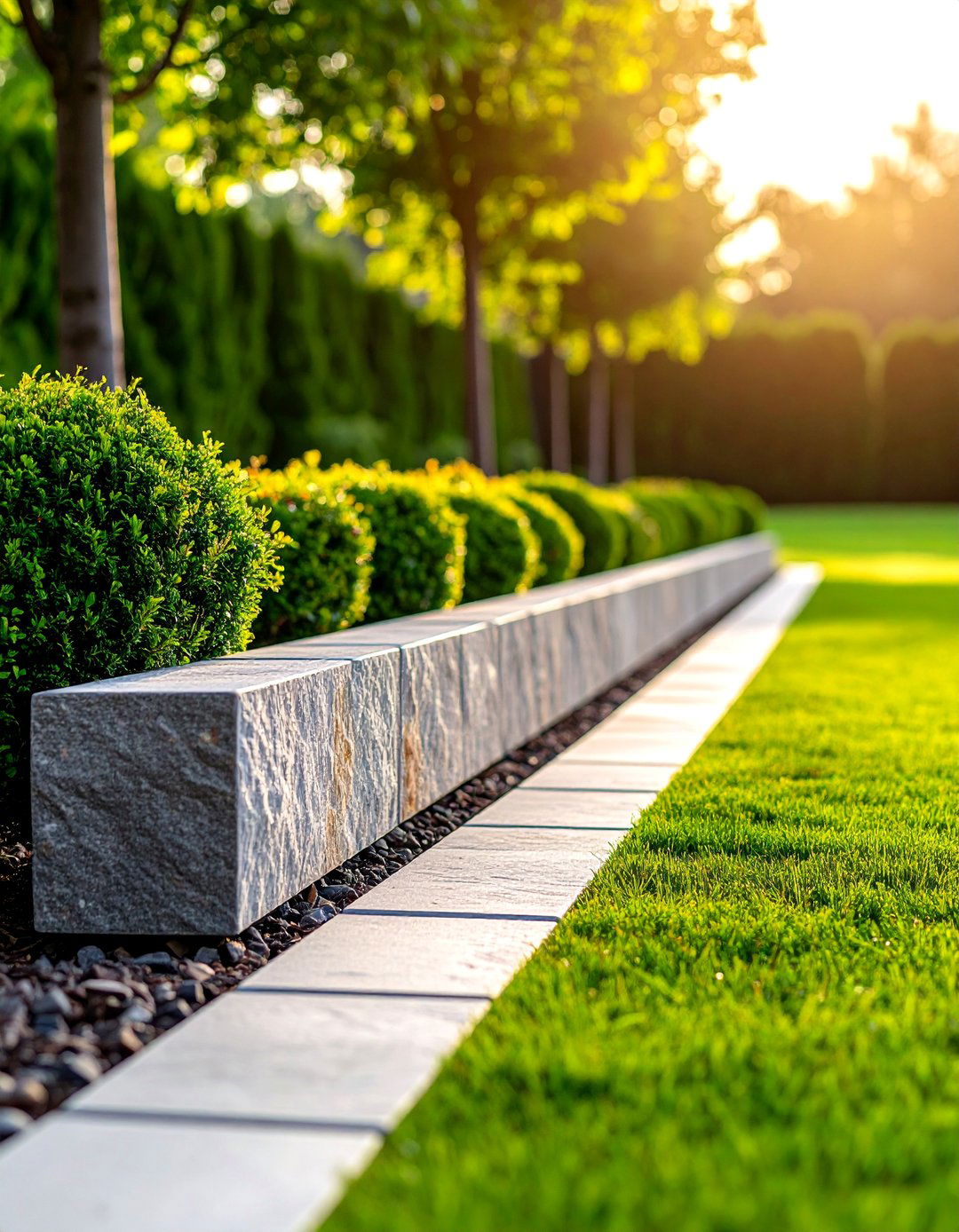
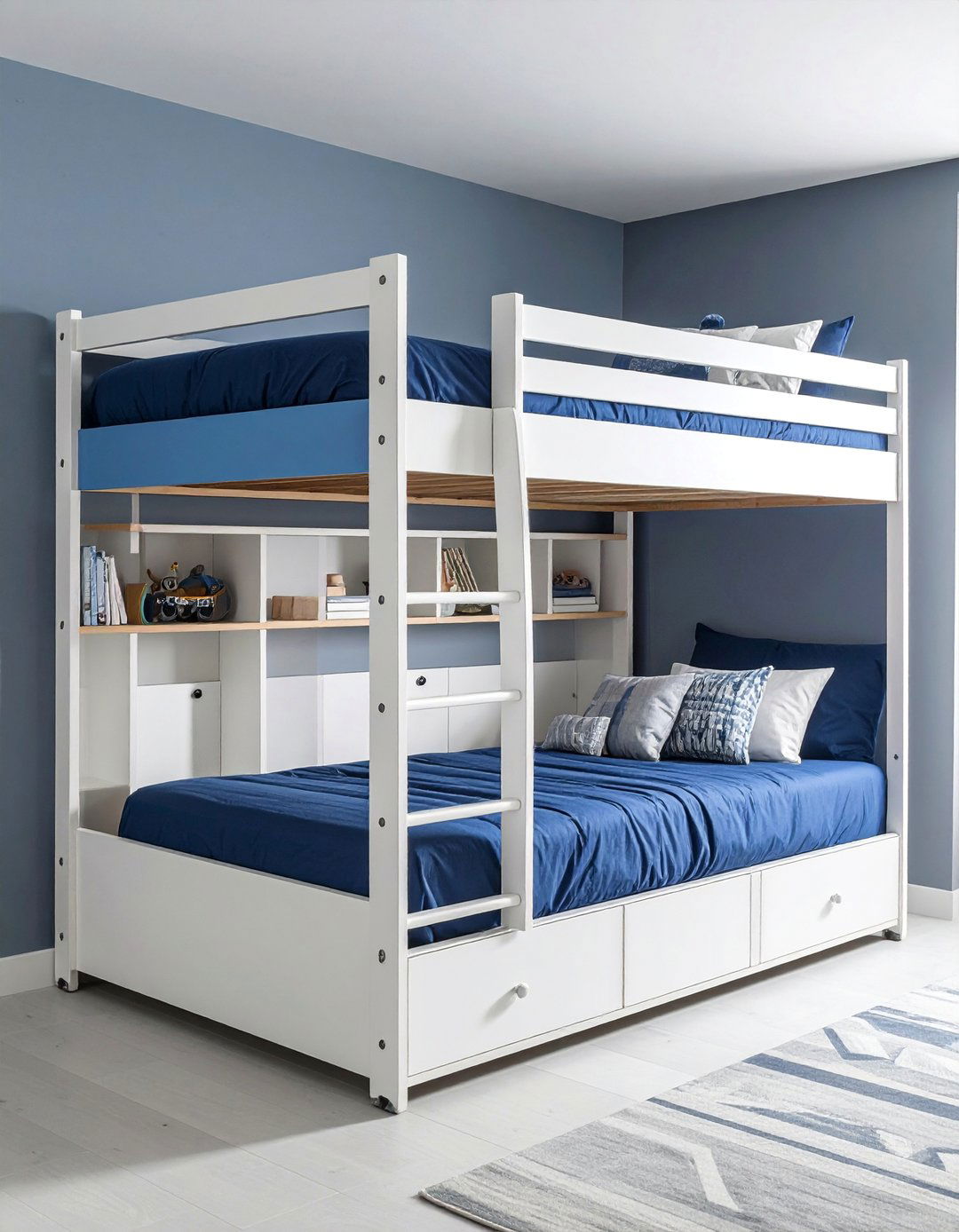

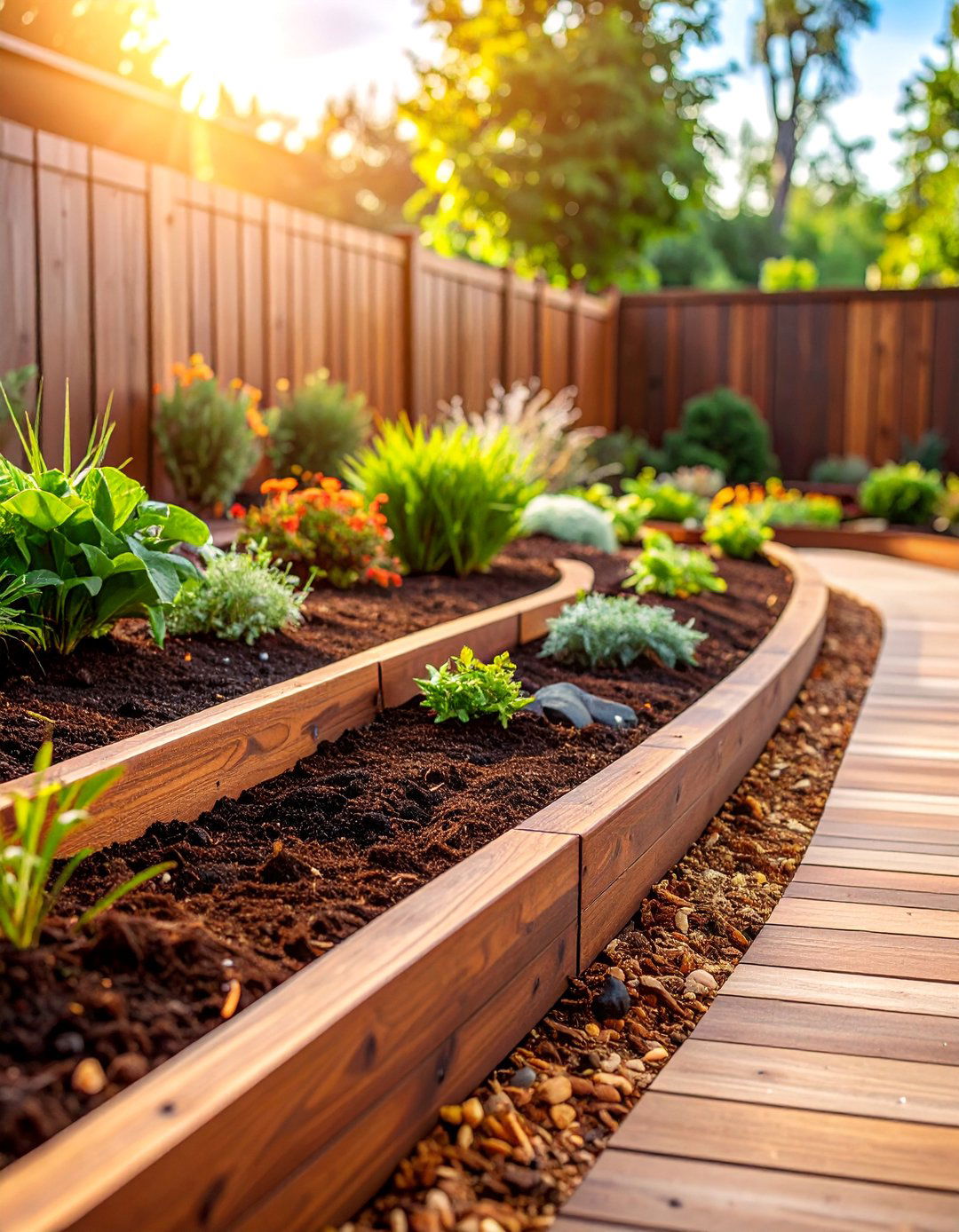
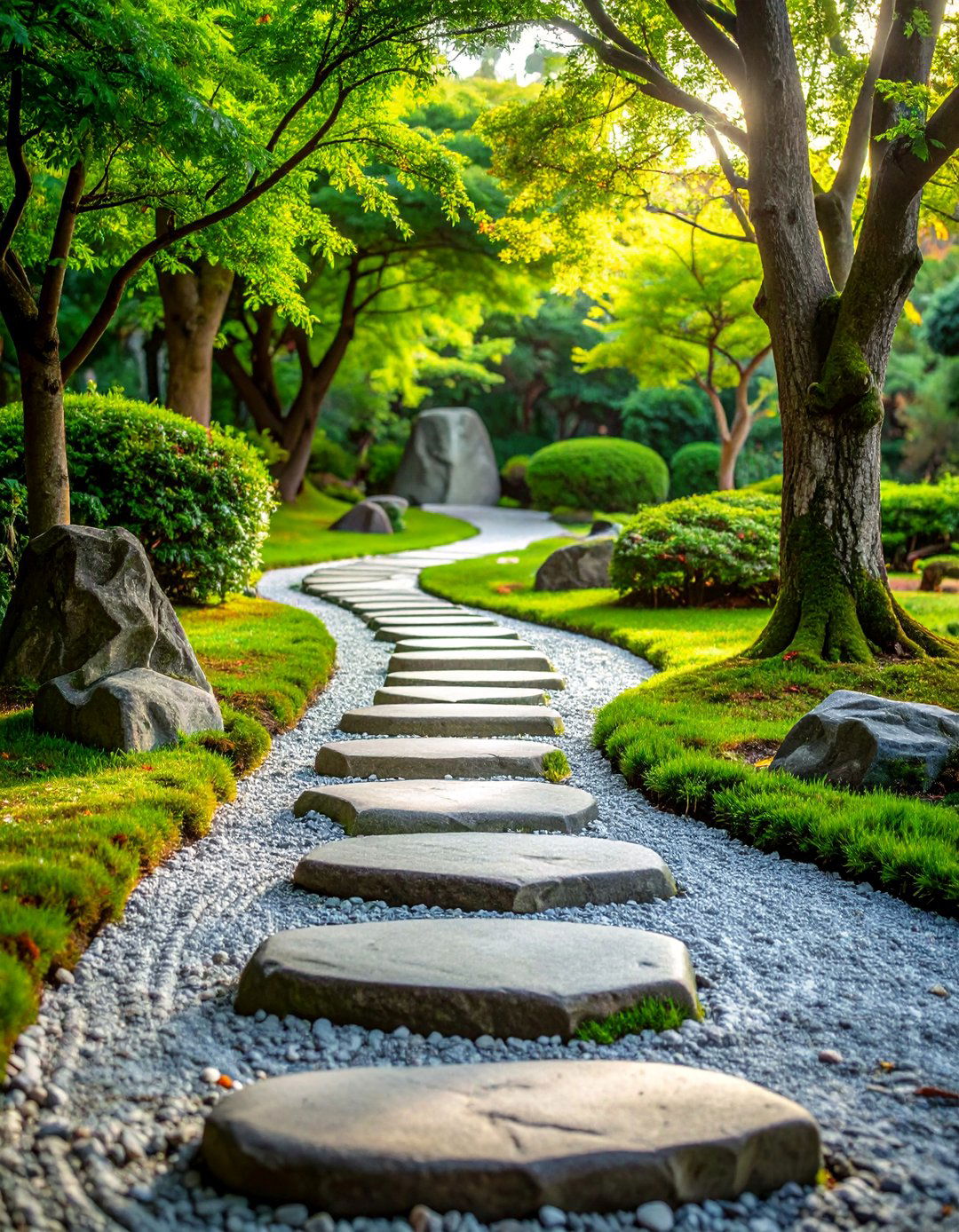
Leave a Reply